Tackling the methane myths



a record US$S9.2 trillion ($15.4 trillion) and youth unemployment is at 21.3%.
ADIFFICULT year is looming for farmers, with new-season lamb prices likely to open $2/ kg below last year – coming after Fonterra twice this month lowered its farmgate milk price.
Analysts warn there is little likelihood of improvement as farmers also juggle high inflation and interest rates.
ASB economist Nathaniel Keall said lower product prices will wipe $3 billion off dairy farm incomes compared to last year, and up to $1.5bn off sheep and beef. Meanwhile, farm debt has risen $1bn since January, according to Reserve Bank of NZ figures.
A key reason is the stalled postcovid recovery in China, which last year bought 32% of NZ’s dairy and 43% of its red meat exports, but other markets are also struggling from low consumer confidence and weak economic activity.
A Ministry of Foreign Affairs and Trade report warns China’s economic growth has slowed, its property market is struggling, local government debt has reached
Fonterra twice this month lowered its forecast farmgate milk price, from a mid-point of $8kg/ MS to $6.75kg/MS, as the Global Dairy Trade index slumped to a five-year-low.
RaboResearch senior agricultural analyst Emma Higgins said China is rebalancing excess domestic dairy supply and inventory and the challenge for NZ will be managing new-season milk flows in an era of weak demand.
She said there is some positive news with tightening northern hemisphere supplies.
United States milk production in June was flat after 11 months of year-on-year growth, while annual European Union milk flows are just 0.2% higher due to hot weather.
AgriHQ senior analyst Mel Croad is forecasting November lamb prices to average $6.85/kg in the North Island and $6.80/kg in the South Island, compared to $8.74/ kg in both islands in the same month last year.
Croad said the forecasts reflect export conditions, which are
Continued page 5



Mid Canterbury dairy farmer David Geddes thought he had seen the last of the big industry crashes in the 1980s, but this year has changed all that. “I’m pretty certain we will survive this round too but it does take prudent management,” he said.

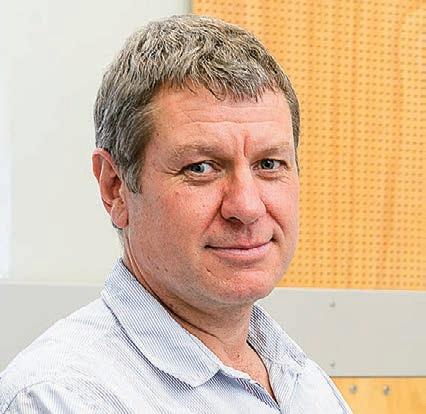
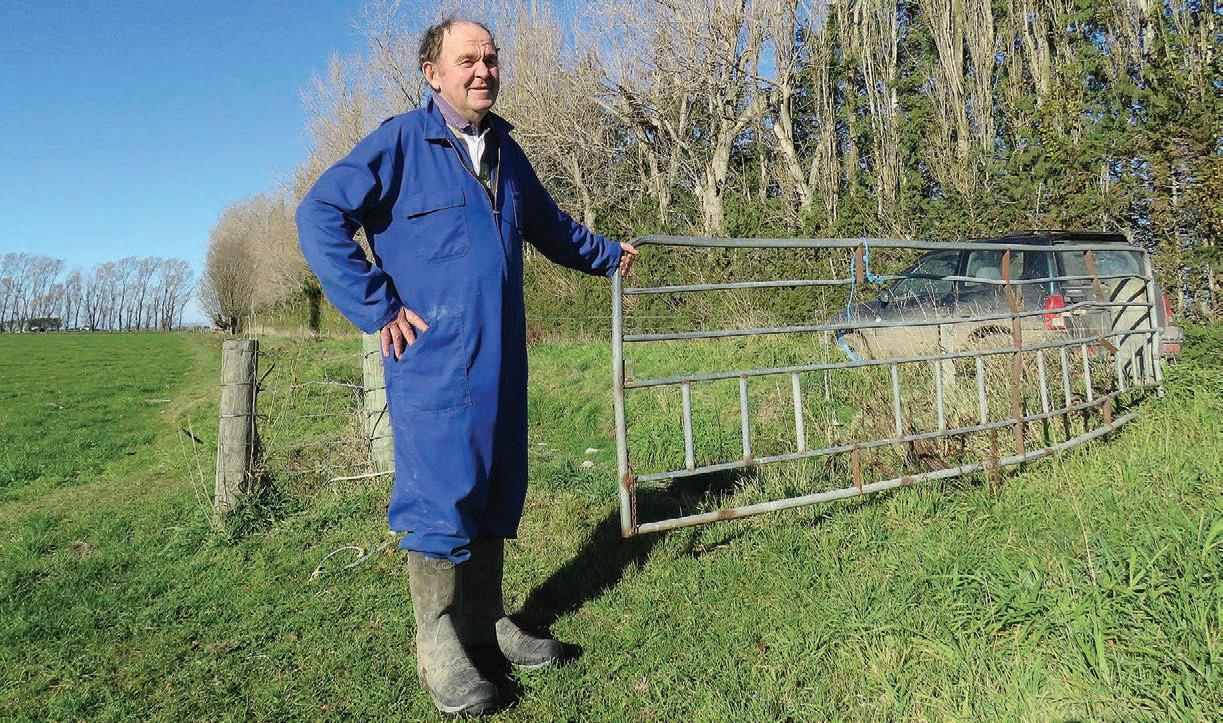
NEWS 7
After spending 25 years developing a thriving sheep cheese and genetics business in Masterton, Miles and Janet King are ready to move on.
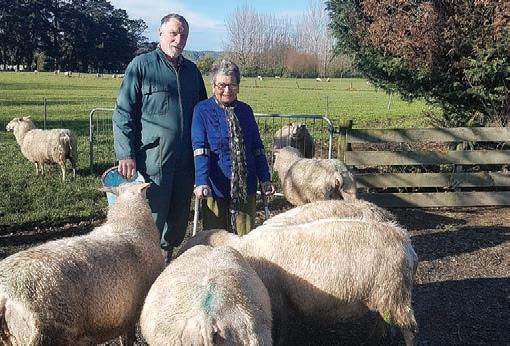
PEOPLE 22

Insurance premiums have risen as much as 30% due to high-cost adverse weather events.
NEWS 5
A rift may be developing over the government’s recently released GHG pricing policies.
NEWS 9

Wools of New Zealand has plans in the pipeline to ensure a stronger future for the fibre.
OPINION 19


We’re proud to be recognised as the nation’s most awarded rural real estate brand at the 2023 Real Estate Institute of New Zealand Awards for Excellence in Real Estate.

Since 1999, Bayleys Real Estate’s dedicated team of country experts has been delivering real results for Kiwis right across the country, in every sector of the rural landscape.
Our team connects our clients with the best local knowledge, marketing expertise and network across New Zealand and all over the globe, which makes this recognition possible.
We are privileged to be on this journey together with our peers and clients, and we know it doesn’t stop here.

Bryan Gibson | 06 323 1519
Managing Editor bryan.gibson@agrihq.co.nz
Craig Page | 03 470 2469 Deputy Editor craig.page@agrihq.co.nz
Claire Robertson
Sub-Editor claire.robertson@agrihq.co.nz
Neal Wallace | 03 474 9240
Journalist neal.wallace@agrihq.co.nz
Gerald Piddock | 027 486 8346
Journalist gerald.piddock@agrihq.co.nz
Annette Scott | 021 908 400
Journalist annette.scott@agrihq.co.nz
Hugh Stringleman | 09 432 8594
Journalist hugh.stringleman@agrihq.co.nz
Richard Rennie | 027 475 4256
Journalist richard.rennie@agrihq.co.nz
Nigel Stirling | 021 136 5570
Journalist nigel.g.stirling@gmail.com
PRODUCTION
Lana Kieselbach | 027 739 4295 production@agrihq.co.nz
ADVERTISING MATERIAL
Supply to: adcopy@agrihq.co.nz
SUBSCRIPTIONS 0800 85 25 80 subs@agrihq.co.nz
PRINTER
Printed by Stuff Ltd
Delivered by Reach Media Ltd
our
Andy Whitson | 027 626 2269 Sales & Marketing Manager andy.whitson@agrihq.co.nz
Steve McLaren | 027 205 1456 Auckland/Northland Partnership Manager steve.mclaren@agrihq.co.nz
Jody Anderson | 027 474 6094 Waikato/Bay of Plenty Partnership Manager jody.anderson@agrihq.co.nz
Palak Arora | 027 474 6095
Lower North Island Partnership Manager palak.arora@agrihq.co.nz
Omid Rafyee | 027 474 6091 South Island Partnership Manager omid.rafyee@agrihq.co.nz
Debbie Brown | 06 323 0765 Marketplace Partnership Manager classifieds@agrihq.co.nz
Andrea Mansfield | 027 602 4925 National Livestock Manager livestock@agrihq.co.nz
Real Estate | 0800 85 25 80 realestate@agrihq.co.nz
Word Only Advertising | 0800 85 25 80 Marketplace wordads@agrihq.co.nz
Dean and Cushla Williamson
Phone: 027 323 9407 dean.williamson@agrihq.co.nz cushla.williamson@agrihq.co.nz
Farmers Weekly is Published by AgriHQ PO Box 529, Feilding 4740, New Zealand Phone: 0800 85 25 80 Website: www.farmersweekly.co.nz
ISSN 2463-6002 (Print)







ISSN 2463-6010 (Online)
SQUARE MEAL: Riddet Institute’s Professor Warren McNabb says red meat provides many of the micronutrients needed to maintain a healthy diet. STORY P10
Food and fibre sector export revenue reached $57.4 billion for the year to June 30, bringing $1.2 billion more into the economy than was originally forecast, Agriculture Minister Damien O’Connor says.

This represents growth of more than $4.3bn (8%) on the previous year. O’Connor said the focus on trade and export growth remains a major cornerstone in the economic recovery plan.
PGG Wrightson has renewed its sponsorship of the IHC Calf and Rural Scheme for another three years.
Launched in 1982, the scheme has grown to be one of New Zealand’s most successful charitable programmes. Through the years it has raised more than $41 million for IHC, funds that have had a transformative impact on the lives of those it serves.
Solar company Lodestone Energy says it has commenced with the next phase of its capital raising programme through a $250 million debt facility from ANZ Bank. The conditional debt facility will support the construction of new solar farms across New Zealand beyond the five that Lodestone has already announced.
Lodestone managing director Gary Holden said the partnership cements the company’s position as the “national leader in solar energy generation”.
Skellerup had a record audited net profit of $50.9 million for the 2023 financial year ended June 30, a 7% increase on the previous record result.
The agricultural division delivered earnings before interest and tax of $34m and the company’s rubber footwear for farming, fire, electric power and forestry led the way. Increased gumboot sales through hardware stores and urban markets in New Zealand and for power companies in the United States returned the higher profit.
Back in 1860, exporting meat to the other side of the world seemed about as easy as nailing gravy to the ceiling. But a few determined kiwis took the bull by the horns and now our grass-fed beef and lamb is sought-after all around the globe.
At AFFCO, we see the same pioneering spirit alive and well in farmers today. We’re playing our part too – exploring every opportunity to take New Zealand’s finest farm-raised products to the world.
pioneering spirit tells us nothing’s out of reach

INSURANCE premiums for farmers are going up by as much as 30% after a number of very high-cost adverse weather events in the past year.
FMG, which has a rural market share of about 55%, said Cyclone Gabrielle was the biggest single event in the company’s 118-year history.
There were three insurance industry-classified “catastrophic events” in FY2023 – Gabrielle, the Auckland Anniversary floods and the Nelson floods last August – and FMG said it made a loss of $15.7 million after tax in the 12 months to March 31.
It was the first loss since 2017 and the Kaikōura earthquake. Gabrielle claims totalled $237m, spread across Hawke’s Bay, the east coast, Coromandel and Northland.
All claims against FMG insurance were $660m in the financial year, up 140% on the previous year.
Gross written premiums were $514m, compared with $458m the previous year, and appear to be on track for $800m in the current year.
Reinsurance revenue was $334m,
universally weak but especially in China, and record volumes of Australian lamb swamping world markets.
Australian lamb prices have subsequently collapsed, its Eastern States Trade Lamb Indicator last week falling to AU$4.60/kg compared to AU$7.60 a year ago.
Given these conditions, the average July export values for NZ lamb fell to $10.96/kg, about $1/kg lower than June and $1.50/kg less than a year earlier.
For the past five years mutton prices have averaged $5.65/kg at
compared with only $14m, and the reinsurance premium expense went up from $50m to $84m, to be followed by a big hike this year.
Dave Kibblewhite, FMG’s chief financial, investment and risk officer, said for Cyclone Gabrielle, reinsurers will be paying approximately 90% of the total claims cost of FMG clients.
“Not only are these weather events from the last year the most significant in our history, but they also coincided with the hardest
this time of the season but are currently between $3.10 and $3.15/ kg. Given the state of China’s economy, Croad is not confident prices will improve.
Beef prices are currently below the five-year average by 10c-50c/ kg but its versatility and ability to shift to other markets will temper price shifts.
BNZ senior economist Doug Steel said with the GDT 20% below last year, the outlook for dairy is weak and unless markets improve he fears this season’s final payout could be in the low-$6/kgMS range.
He is also pessimistic about
reinsurance market in over 40 years following a number of large global natural disaster events.
“These factors have resulted in large price increases for reinsurance, in excess of 30%, and also global capacity has been reduced.”
Farmers and orchardists can take small comfort in the knowledge that their premium cost increases are similar to those right across the insurance industry, and in towns and cities.
sheepmeat prices given weak demand from China and Europe and the impact of Australian production, adding it could become even more desperate if forecast El Niño weather brings unseasonal dry conditions to Australia and NZ.
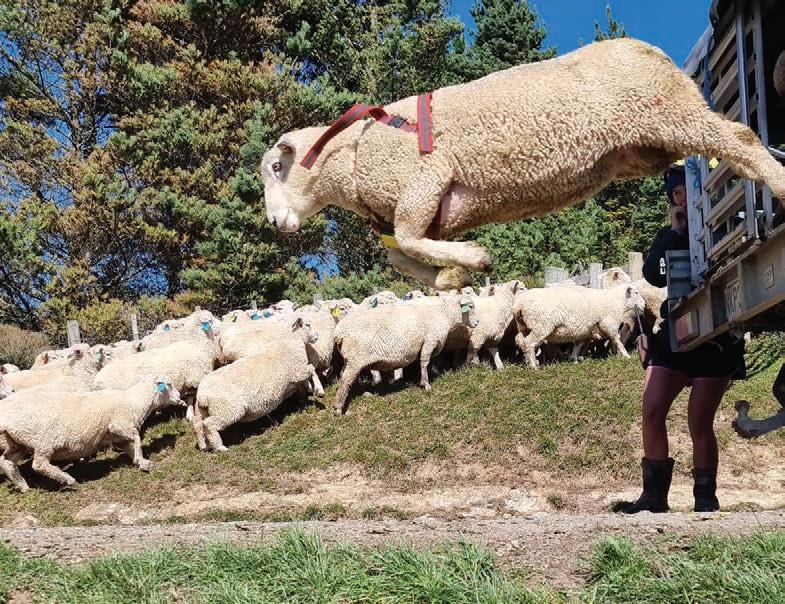
The NZ-United Kingdom free trade agreement has provided new access for beef, but the Australian free trade agreement allows tarifffree access for Australian lamb, providing extra competition. Steel said tempering the gloom is the fact that farmers have repaid debt so have strong balance sheets, the NZ dollar is below US60c
The Quashed online insurance comparison site says house insurance premiums have gone up 20%, contents up 15% and vehicles up 10%.
Incoming FMG chair Sarah von Dadelszen, a sheep and beef farmer in Central Hawke’s Bay, said in a radio interview that the past financial year has been very hard for the mutual insurer.
“We took a towelling in Cyclone Gabrielle, which was right in our core area for insurance clients.
“The annual negotiations for reinsurance were underway at the time, however, and we were able to get 100% of what we were looking for.”
FMG held its annual meeting in Cromwell and online last Friday, August 25, where Von Dadelszen took over from Tony Cleland, who had been on the board since 2007. The covering letter to customers with the annual statement and invoice that contains the large increased premiums doesn’t explain the reasons.
Large Hawke’s Bay arable farmer Hugh Ritchie said the 25% increase in FMG premiums prompted discussion and investigation on lifting excesses and possibly taking on some self-insurance.
“Our claims history over the past couple of years has probably broken even with the premiums
and likely to stay there for some time, and global meat and dairy production will fall as producers respond to the same conditions.
ASB’s Keall said bank forecasts for the coming dairy season are conservative at $6.60kg/MS, below Fonterra’s latest forecast $6.75kg/ MS.
He can’t see interest rates easing for at least a year.
“It is going to be a pretty tough one for a lot of people,” he said of the coming year.
ANZ agriculture economist Susan Kilsby said while interest rates appear to be close to the top of the cycle, the bank has factored
paid, so I can’t complain.
“Look at the wildfires around the world and the climate-related payouts. So, I think we have to be realistic about the costs of reinsurance and the premium increases here.”
The Insurance Council of NZ said the reinsurance market is the toughest it has been in many years driven by accelerating climate related losses.
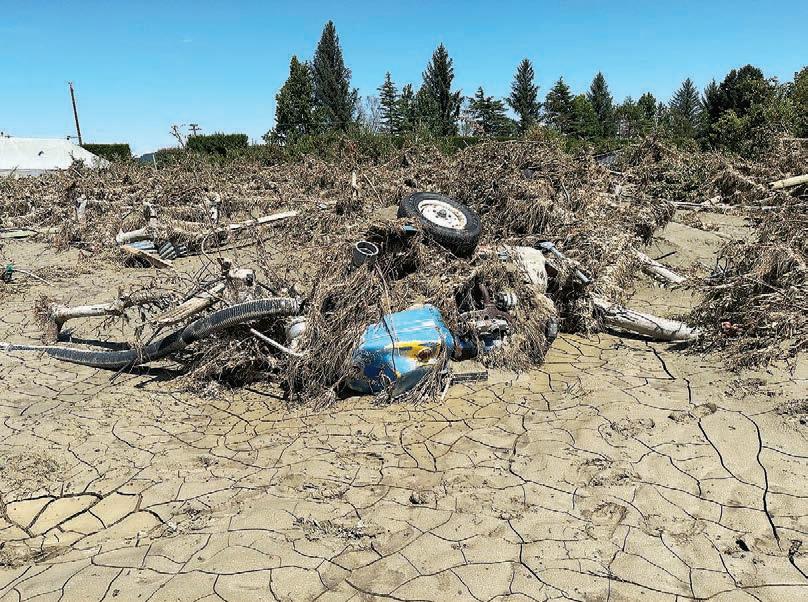
“Last year was another record year (compared to long-term averages) for such losses.
“And 2023, especially in recent months, has been marked by a rolling series of large climate events, especially fires and floods.
“Premiums are undergoing a step change to reflect a new understanding of climate risks and costs here and globally.”
The council said a 30% increase in the cost of building materials over the past two years was reflected in higher premiums for house replacement insurance.
Insurance companies in NZ are required to keep sufficient capital reserves or reinsurance for a onein-1000 years catastrophic event.
FMG chief executive Adam Heath said the company is financially secure and extremely well placed to pay claims, with $330m in reserves and strong reinsurance support.
in at least one more rate rise of 25 basis points.
“We are still a long way off interest rates coming down. We are at least a couple of years off that.”
Most farmers have reset their loans and shifted to floating or short-term fixed plans.
Westpac senior agri-economist Nathan Penny doubts farmers will have much of a reprieve this season, although the bank is forecasting farm inflation to fall from 17% last year to low single digit figures by the end of this year.
MORE: See pages 6 -7
RURAL debt has risen $1 billion since January as livestock farmers react to falling incomes.
Reserve Bank figures show debt increased from $61bn in January to $62bn in June, with interestonly debt rising from $30bn to $32bn and revolving credit lifting from $18bn to $19bn.
ANZ agriculture economist Susan Kilsby said while consumer confidence is weak globally, it is especially so in China where people are focused on rebuilding their savings rather than spending. A collapse in the housing sector and China’s 21.3% youth unemployment rate are other factors.

Youth unemployment has soared following government changes to how foreign-owned companies can repatriate profits from their China-based manufacturing businesses, prompting manufacturing to transfer to other countries.
She said farmers, especially dairy, have in recent years paid back a substantial amount of debt, which has strengthened balance
sheets and will help them to weather this economic cycle.
The majority of rural sector loan terms have expired and been reset at higher rates.
She said land prices have been under pressure since last year, with listings outstripping buyers while changes to the Emissions Trading Scheme have created uncertainty among potential forestry investors.
A Ministry for Foreign Affairs and Trade report notes that China recorded deflation of 0.3% in July while weak demand has pushed factory gate prices to rates last seen in 2016.
There are a few factors that could swing things in the favour of the milk price, but I would put that in a ‘keep an eye on this’. I would not rely on it.
Nathan Penny WestpacAnnual export growth has contracted for four consecutive months while imports fell 12.4% in the year to July following a 6.8% year-on-year decrease in June.
ASB economist Nathaniel Keall
said he does not see interest rates easing for at least a year and said wages are also likely to stay high.
Asked if NZ exporters are too reliant on China, Keall said the size of that market makes it impossible to ignore.
Aidan Gent, ASB’s rural banking manager, expects fewer people will be seeking to buy farms in the coming season, which could lead to softer land values.
Bank leaders are urging farmers to talk to their professionals, to control what they can control and develop a plan to deal with what they view as a cyclical downturn.
They all reiterate their support for the industry and confidence in its medium- to long-term future.
Bruce Weir, Rabobank’s country banking manager, said the sector has been through cycles before, with 23% interest rates and the 2014-15 dairy downturn, and he is confident farmers will endure.

He said farmers should reduce nonessential spending and make short-term decisions that will not greatly impact their long-term viability.
Rabobank has held 19 Financial Skill workshops which have attracted 300 people, and plans to hold more.
BNZ senior economist Doug Steel said as farmers protect cashflow, the impact will be felt through the whole economy.
He sees some green shoots in the level of debt repayment, a weak NZ dollar and the fact the low prices will force a global correction especially with dairy production.
The bank’s agribusiness manager, David Handley, said the current environment is challenging for farmers with low commodity prices, inflated farm working expenses and high interest rates, which will create cashflow pressure.

Options include moving loans to interest-only and providing increased working capital facilities where appropriate.
Handley said it is too early to know the impact on debt levels and land values, which will depend on how long commodity prices stay low and interest rates stay high.
Westpac senior agri economist Nathan Penny said while the coming year will be tough, the medium- to long-term prospects remain bright.
Milk production globally, apart from in China, is under pressure, grain prices are rising and weather has impacted production in the northern hemisphere.
“There are a few factors that could swing things in the favour of the milk price, but I would put that in a ‘keep an eye on this’. I would not rely on it,” he said.
EXPENDITURE is being carefully scrutinised in Ross and Jess Bowmar’s farming operation as they hunker down for tougher times.
The young couple farm sheep and beef on their high country station Redcliffs in the Rakaia Gorge.
Balancing economic growth with environmental and social enhancement has its challenges but of more immediate concern are the falling meat prices and subdued wool prices.
Born and raised in Southland, after attending Lincoln University Bowmar headed offshore for further study at Michigan State University in the United States. After graduating he gained experience in direct
management of sales, import and export logistics, processing, risk management and profit and loss ownership in various roles across the US, Canada, Australia and New Zealand.

Three years ago he returned to farming Redcliffs, a 1935ha property running 8500 stock units. With the farm in winter mode at the moment, there’s time to review the cashflow and consider options to counter the falling income.
“We don’t start the lambing until later in September. We have the Merino ewe shearing out of the way with a 10-year rolling NZ Merino Company Icebreaker contract taking a significant amount of the wool clip.

“This contract provides stability in income, which is good news in a year like this.

“We’ve yet to do the hogget shearing. The wool is not contracted and the markets will
be back on last year.”
There’s been added emphasis on ensuring wool meets contract specifications this year given the difference to current market prices.
“Shearing is the highlight of the year on a Merino farm.”
How is the rest of the business doing, given the forecast farmgate prices?
Continued next page









 Annette Scott NEWS Dairy
Annette Scott NEWS Dairy

MID Canterbury dairy farmer David Geddes, who has been in the industry for 60 years, thought he had seen the last of the big industry crashes in the 1980s.
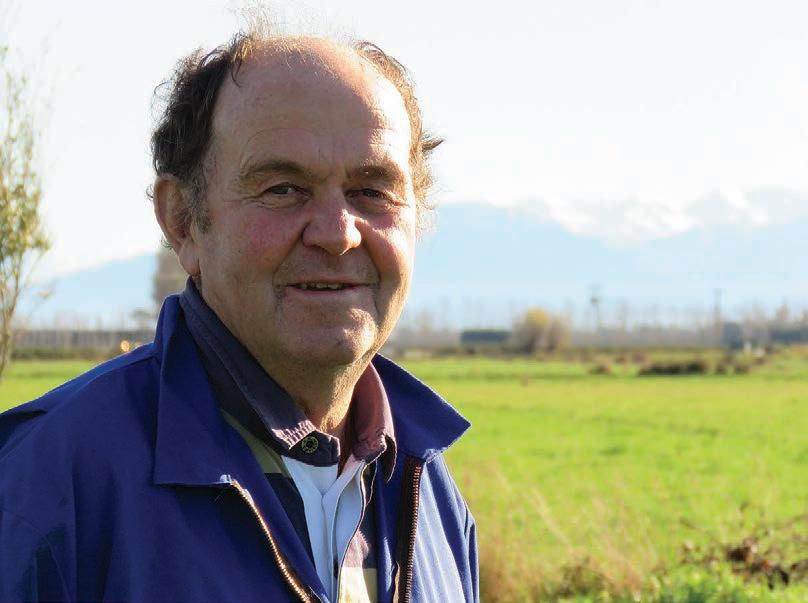
“I had a lot of good mates who just had to walk off their farms back in the ’80s. I thought we were out of that now, but it keeps coming back,” Geddes said.
“When you look at the whole of the New Zealand economy and you see someone on $60-70,000 a year, it’s a good wage, but they can’t afford to put food on the family table, we are all in a bad way.
“I’m getting a bit long in the tooth these days so I have bit more time to study these things.”
Geddes heads a family dairy farming business that has survived the ups and downs of the past six decades.
“I’m pretty certain we will survive this round too but it does take prudent management,” he said.


“When the payout was $3.90 we had to borrow money. At $8 plus
Continued from previous page
“Well, we have to be really careful running calculations across other areas of the farming business,” Bowmar said.
“You can change the business but you can’t necessarily change fast. For example, you can adjust numbers in various stock classes but you could easily swing the wrong way.

“We are dialling back on nonessential expenditure; a lot of the money is going to the bank.


“We are weighing up fertiliser and weed control this year but obviously reducing inputs in those areas is not sustainable long term.
“We have applied for our



we had a pretty good year last year so we paid off some more debt.”
Farm maintenance also benefitted from the better year.
“We managed deferred maintenance on the silage bunkers, the irrigation, the farm tracks, we caught up a bit.
“There is a whole lot to be maintained. The rotary milking





sustainability loan, which earns an interest rate deduction. A lot of the requirements we have to do for various farm assurance programmes so we may as well have a saving as well.”
Touching on meat schedule prices, Bowmar said: “It’s ugly.”
Many farmers won’t have made any money out of trade lambs this year, and nor have some breeders.
“We are fortunate to have a Silere contract through Alliance, but unfortunately the price is still tied to the meat commodity market so meat income is well down on past years.
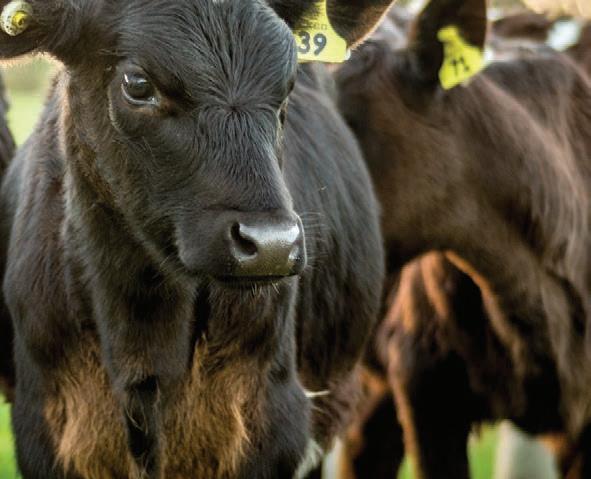
“What we need to see is prices heading in the right direction to give us some confidence.”
That requires innovation from
shed is 15 years old, $30,000 to redo the weir plates and rollers, then there’s tech systems, meters on the irrigation pumps, the vet still needs to visit.
“You have to factor all this in and manage it well.
“We have all heard the talk of $10 [payout] but we haven’t seen it yet and it’s further away than ever.




“We’ll put our cheque books
the downstream processing companies in the red meat sector to extract more value from every animal and effectively put some viability into the sector.
“Sheep are more work than cattle and people will move to other ventures if we don’t get improvement very soon.
“We really are still a commodityreliant industry as is shown by the fluctuations in price.


“All of us need to get our thinking caps on as to how to evolve our systems and the industry to at least attempt to be viable.
“While it’s a challenge we would rather not have, I’m sure, like the generations before, we’re up for the challenge.
away for a while and keep riding our pushbikes.”
The farming operation is always adapting and Geddes sees that as never changing.
“You have to look at how you can make things better for yourself.
“We are biological farming, getting on well with liquid fertiliser and saving money.”
But he said the real crunch will come in May, June, July and August next year.
“We are always looking a year ahead.
“We have got to budget for next year now and the banks are as in the dark as we are.

“Meantime I’m a not a dairy farmer, I’m a full-time charity farmer, milking cows and going to lose a dollar [per every milk solid] for all our work.




“But, if I had my time all over again, I would still be a dairy farmer.”
Meanwhile, the impacts of cuts to forecast milk payments to the New Zealand’s 12,000 dairy farms will ripple across the wider economy with the arable sector also feeling the pinch, Federated Farmers arable vice-president grains Andrew Darling said.

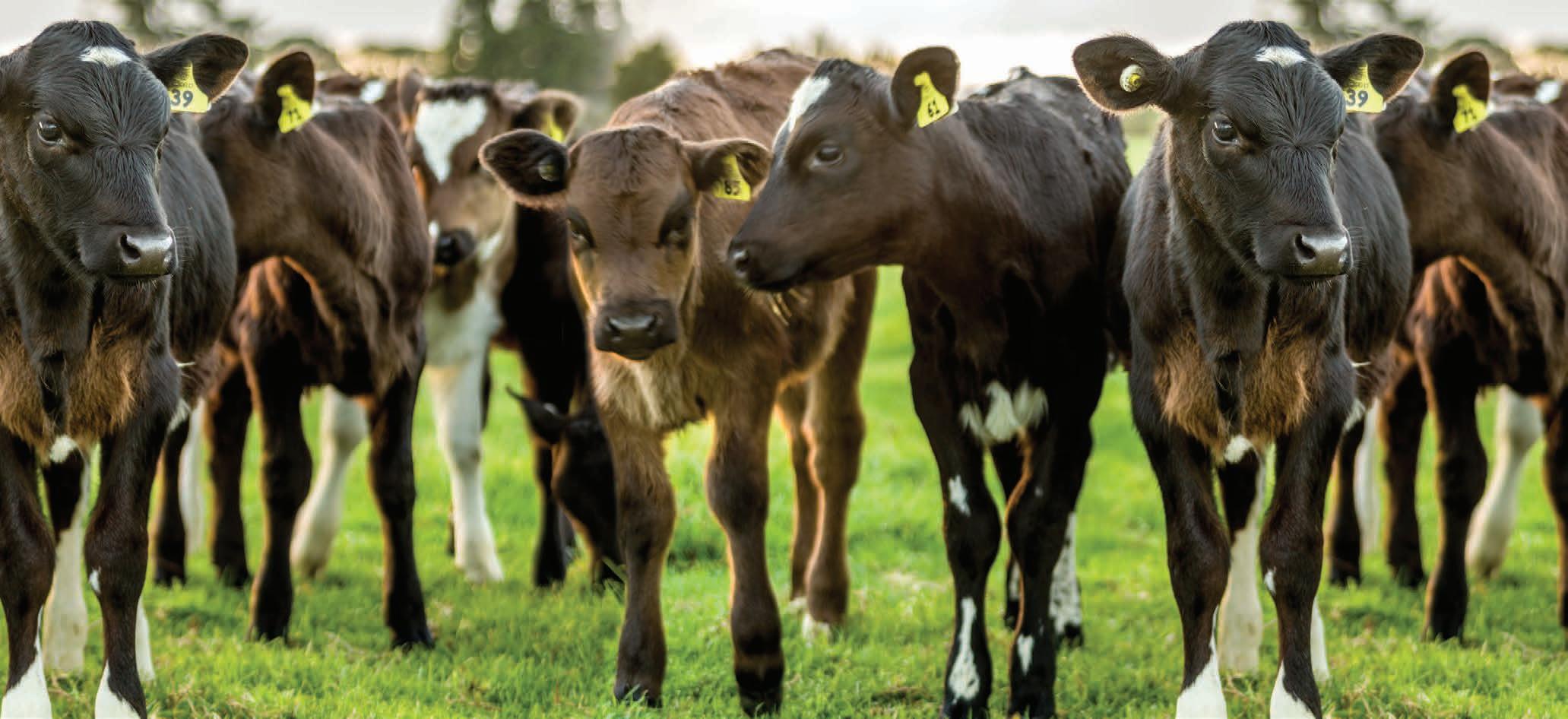
The July Arable Industry
“You have got to be optimistic, keep enjoying what we are doing, look for opportunities and talk to other farmers.”
He welcomes political polls suggesting a change of government may happen in October.
“This would bring welcome relief to farmers with a greater chance of more pragmatic regulations or potentially even less regulations.
“With most farmers unlikely to pay tax this coming year, the incoming government is going to need to be prudent financial managers with a focus on efficiency and getting more bang for every dollar, just like us farmers.”
David Geddes DairyMarketing Initiative (AIMI) survey shows sown and intended sowing feed wheat and feed barley crops are down 6% and 15% respectively on last season.
“There’s probably still a reasonable market for feed grain in the North Island but it’s hard to transport South Island grain up there at a reasonable price, especially in competition with Australian grain.
“It’s an expensive bit of water that splits our country in half, unfortunately.”
A large amount of the sold feed wheat, 58%, is still stored on farm.
“A good amount of this will likely have been at a good contract price for the grower, and the merchant will be starting to move that grain now, but dairy farmers, given the outlook, probably aren’t as keen to fill feed silos at the moment as they have been in past seasons,” Darling said.
We’ll put our cheque books away for a while and keep riding our pushbikes.
farmerBREATHER: Ross Bowmar says winter mode on the station is allowing time to review the cash ow and consider options to counter falling income.

ARIFT appears to be developing between the government on one side and Beef + Lamb NZ and DairyNZ on the other over policies to price agricultural greenhouse gas emissions.
The government caught the sector unawares by announcing it is to require farmers to report farm-level emissions from the end of 2024 and will put a price on those emissions in late 2025.
Responding to industry criticism about the timing and lack of detail in the announcement, Agriculture Minister Damien O’Connor told Farmers Weekly that some of the reaction was predictable and gives farmers misleading information.
Asked if he was referring to criticism levelled at his plans by Beef + Lamb NZ (BLNZ), DairyNZ and the Meat Industry Association (MIA), O’Connor said their response indicated a stepping back
from their role in He Waka Eke Noa.
He said critics have not clearly explained their positions to levy payers and are not reflecting what exporters are saying – that consumers want food producers to address greenhouse gas emissions.
Primary sector groups were told of the new policy only the

PREDICTABLE: Agriculture Minister Damien O’Connor says critics of the government’s greenhouse gas emissions policy have not clearly explained their positions to levy payers and are not re ecting what exporters are saying.
afternoon before it was publicly announced, which BLNZ, DairyNZ and the MIA described as “frustrating”.
In addition to delaying the requirement to report farm-level emissions to the end of 2024 and pricing those emissions in late 2025, the policy is to ensure pricing is at farm level and set at
The sector is showing progress towards reaching emission targets. Taxing us is not going to get us there any faster.
Kate Acland Beef + Lamb NZthe lowest price needed to meet reduction targets.

It will use a split gas approach and allow scientifically validated on-farm sequestration to be included in the Emissions Trading Scheme.
DairyNZ chair Jim van der Poel reiterated in an interview his criticism of the poor timing of the announcement, coming so soon after Fonterra lowered its forecast milk price. He was also critical about the lack of detail, such as who will determine an emissions price and how will it be set.
“To say ‘We are going to price you in a couple of years’ but then not provide any detail, it wasn’t
very helpful,” he said.
The dairy sector wants to be part of a solution – but not one that undermines rural communities, he said.
BLNZ chair Kate Acland also reiterated her frustration at the timing and the announcement’s focus on pricing instead of developing systems to measure and report emissions.
“The sector is showing progress towards reaching emission targets. Taxing us is not going to get us there any faster,” she said.
The policy does not include a review of methane targets and their impact on global warming as was requested by BLNZ and Federated Farmers.
O’Connor said there is nothing new in the policy and he timed its announcement to ensure development work continues on an emissions calculator and sequestration assessment.
He described his relationship with primary sector leaders as “robust” and said it will continue to be so, adding that his door remains open to leaders to discuss any issue.
created falls on rural shoulders.
A LEADING climate scientist has given the government’s plan to price farm emissions a tentative tick, but says New Zealand needs to have a conversation about its priorities as the push to reduce emissions intensifies.
Canterbury University Professor of Physics David Frame told the Farmers Weekly in Focus podcast that NZ’s climate strategy relies heavily on reducing emissions from agriculture but asks less of emitters of carbon dioxide.
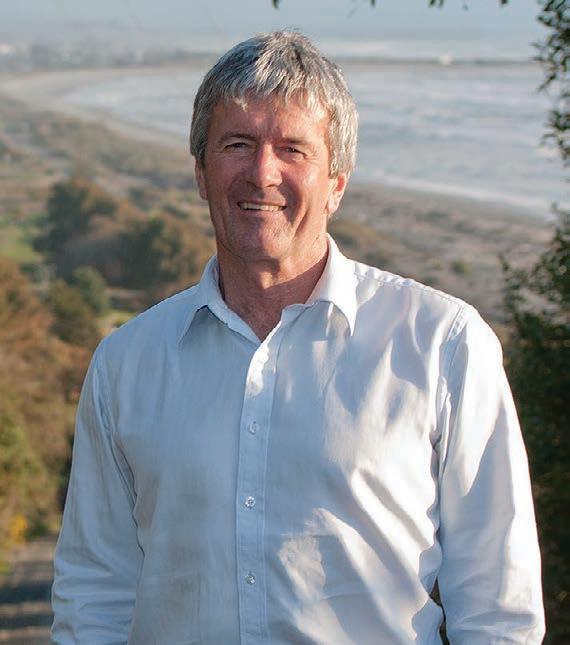






“We actually have a target that would imply that we are no longer warming the world by about 2035,” Frame said.
“And in fact, we’re undoing some of the warming we’ve created by 2050 and the burden for that reduction in the warming we’ve
“The conversation I don’t think we’ve had is about why it’s okay for urban New Zealand to add more warming over the next 30 years, but rural New Zealand has to reduce it significantly over that 30 years.”
Frame said NZ’s two-gas approach that separates shortlived gases like methane and nitrous oxide from carbon dioxide, a long-lived gas, is the right one.
“I think the commitment to set the price at the lowest level possible to meet the reduction goals is obviously the right one.
“Why would you want more? Why would you impose a bigger tax than you need?”
But Frame still has concerns about sequestration.
He supports an idea put forward by Parliamentary Commissioner for the Environment Simon Upton, which proposes allowing methane
emissions to be offset by planting trees, but not carbon dioxide emissions.
The conversation I don’t think we’ve had is about why it’s okay for urban New Zealand to add more warming over the next 30 years, but rural New Zealand has to reduce it significantly over that 30 years.
David Frame Climate scientist
“I’d like to see that get developed for sheep and beef, especially, to give them extra options.”


Methane’s impact has been debated hotly in rural
communities in recent months and Frame said much of what has been promoted doesn’t stand up to scientific scrutiny.
“It’s a sceptic myth that CO2 and methane contributions are overstated,” he said.







“One of the things that has been a bit disappointing is that some people in rural communities have embraced people like Tom Sheahen, who doesn’t have a record in climate change research and is publicising research by a couple of physicists from the United States, who also don’t really have a record of doing a lot of climate change research.”
They have claimed the climate research community has handled the overlap between different absorption lines in the light spectrum badly.
“But this isn’t really true. That stuff’s been factored into climate models for ages.
“They haven’t really done the background reading to know exactly what everyone does.”
Frame said if they did, they’d realise that most of the effects they’ve assumed are not accounted for, are in fact factored in.


“We also do know about clouds and the difference between cloudy sky radiation, clear sky radiation and all these things.




“So the more these guys who come in with the strong claims learn about the field, the more they usually converge with where we actually are.
“It’s a shame that it’s been hyped up as showing that methane is an irrelevant greenhouse gas. That’s just not true.
“We have a good handle on methane.”
MORE: Listen to Farmers Weekly in Focus wherever you nd your podcasts.
THE new Natural and Built Environment Act promises to embed better protection for New Zealand’s fresh fruit and produce supplies in future land use decisions.
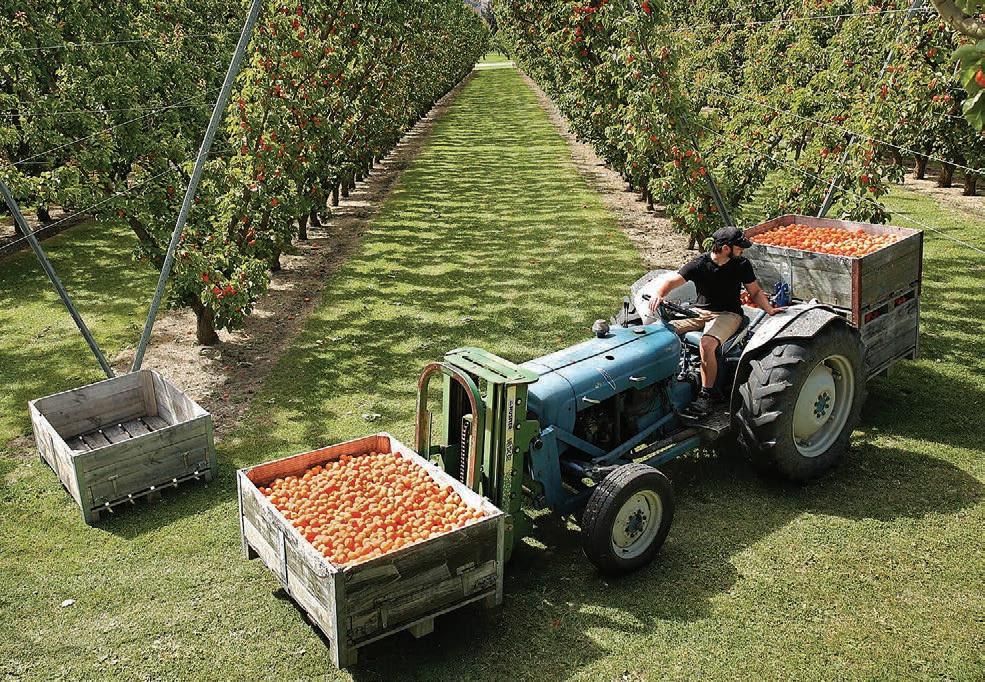
Passed in the pre-election run-up before Parliament shuts, the Act undertakes to prioritise protection of the natural environment for present and future generations, better housing development within environmental limits, better preparation for climate change adaptation and more recognition of mātauranga Māori.
It has been welcomed by the horticultural sector as a huge step in recognising the value of food grown on high-value soils in New Zealand. It recognises that high-value land cannot be subject to inappropriate development and aims to ensure land-based production is protected on those soils.
Horticulture NZ policy and strategy manager Michelle Sands said the Act has done a good job of recognising the value of land
classes 1-3, in having a specific outcomes associated with its use, namely the continuation of food production.
The Act has been criticised by Federated Farmers for what it called a long list of vague and uncertain terms likely to lead to endless and expensive litigation. Sands acknowledged the Act does not distinguish a clear hierarchy between its different goals.
“But that would eventuate at the next level of policy. Over time you will see how these outcomes will be differentiated for different regions, which are not provided for in the Act at the moment.”
But the Act’s particular and specific reference to national planning having to ensure a supply of fresh fruit and vegetables be available is heartening, she said.
“Alongside having housing, water and a clean environment, we do need to have a reliable food supply. It’s about recognising that due to our isolation the supply ensures we are resilient.”
She said the Natural and Built Environment Act (NBA) also provides a framework to try to rein in a Resource Management Act (RMA) that has multiple plans being generated by regional
and local councils.
“Councils are in this constant planning cycle. This will simplify that. It is extremely onerous for any organisation involved at present.”
For growers and orchardists, she said, fewer plans and a simplified approach will help those who may have properties in multiple council areas, something not uncommon in market gardening.
“And one of the things we struggle with in the RMA is cumulative effect – that is, how a resource like water is managed once it has been fully allocated.
“The new Act is not explicit on how such decisions are made, but it does provide a framework for supporting decisions, something we are really stuck around with the RMA at the moment.”
The NBA is supported by the Spatial Planning Act, which aims to co-ordinate decisions made under relevant legislation to ensure they meet long-term regional spatial strategy.
The Acts will play a big role in determining how vulnerable but productive flood plain regions throughout NZ are managed.
“There is a tendency to think flood protection only applies to towns.
“I think we need to challenge
VALUED: The Natural and Built Environment Act has been welcomed by the horticultural sector as a huge step in recognising the value of food grown on highvalue soils in New Zealand.
that view and think about productive land too and what sort of infrastructure investment is needed to keep it productive, rather than simply abandon it because of a risk that exists,” Sands said.

“The Act gives direction on how to understand risk, and how to manage it.”
With much of the east coast still picking up the pieces from Cyclone Gabrielle, Sands said she suspects the RMA’s rules will apply in the short term, but the NBA will likely increasingly come into play after inevitable future events.
“It does signal a more direct approach to climate change and increasing risk.”
While not as revolutionary as the RMA was when it kicked off over 30 years ago, Sands said, there will still be much that needs defining by the courts.
iron phosphorus and copper.
NEW Zealand red meat is not just a protein story and has a vital role to play in the global supply of nutrients, a nutritional scientist says.
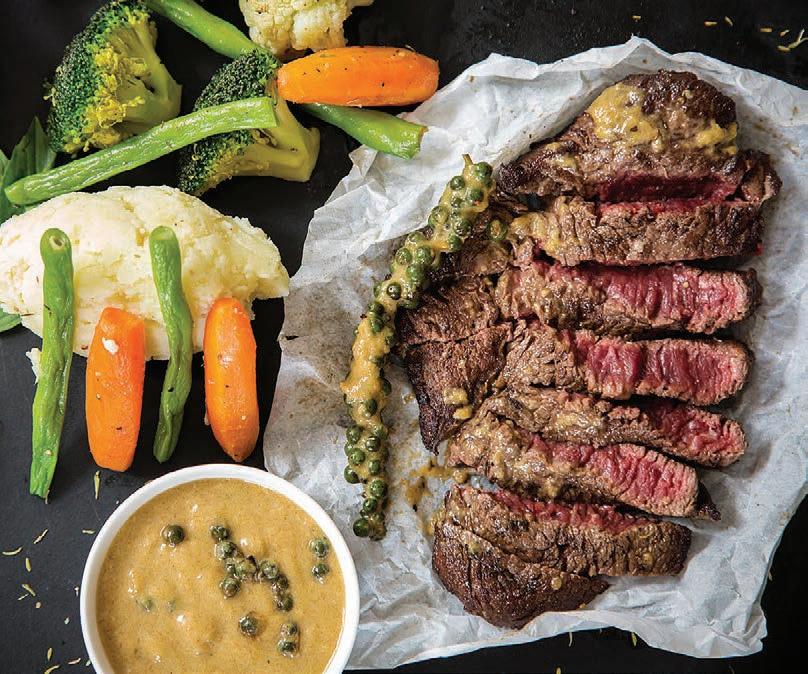
Exporters should focus on the good that red meat does in diets rather than only talking about it as a protein export, the Riddet Institute’s Professor Warren McNabb said at the Red Meat Sector Conference in Auckland.

The institute created a model called the Delta Model that allows it to run future food scenarios and the consequences for feeding the globe.
The model measures 29 nutrients found in red meat with vitamin B12 being one of the most highly ranked nutrients, while it fares less well in ones like calcium and vitamin E, he said.
It is also a poor source of fibre and magnesium.
McNabb said it annoys him when government ministers talk about the red meat sector as just a protein export.
“It’s not. It exports food. Red meat is mainly about micronutrients, it’s not about protein.”
They include vitamins A, B1, B2, B5, B6 and B12, zinc, selenium,
The world would have a major problem supplying people with vitamin B12 if red meat was removed from people’s diets because it is impossible to get this vitamin from plants, he said.
“Meat is critical in the global supply of several nutrients.”
The protein in meat is also highly bioavailable, meaning that meat protein is absorbed into
the body more easily than plant protein.
Meeting nutrient requirements is the major challenge in reductions of red meat in diets as both meat and dairy are foods that are high nutrient content providers.
“They form a very low amount of energy consumption but have a very high amount of nutrients, particularly micronutrients.
“Plants are the opposite; they don’t have a lot of micronutrients
but they have a lot of energy.”
People need both plants and animal-sourced foods, he said.
A healthy diet for one individual is not necessarily sustainably globally and modelling shows that the high costs of a vegan diet that provides all the nutrients that plants lack is not globally sustainable.
“We can’t produce enough nutrients. We don’t have enough land for the plant material to do that.”
A vegetarian diet could be adopted, but it would require major changes, he said.
The meat industry needs to have sensible, fact-based conversations around meat consumption.
McNabb is also sceptical about the role cultured meat could play in the future and its ability to commercialise the technology at a scale that would make a difference.
Commenting on the cases in Singapore and the United States where the technology is being commercialised he said: “In the restaurants that sell it, one day every two weeks you can go and have it because that’s the amount they produce.”
A calculation from Australian scientist Paul Wood showed that the maximum production this cultured meat company achieved could be used up by McDonald’s in one second.
“As a technology it’s a long way from being commercialised at a size where you can really impact the world.”
The institute is publishing a new model later this year examining milk protein fermentation. It looks at what it would take to produce the equivalent of 10% of the world’s milk protein.
We can’t produce enough nutrients. We don’t have enough land for the plant material to do that.
“To do that, you would have to grow 40-50% more sugarcane than the world currently grows. That’s a massive increase and we don’t have the land to be able to do that.
“You would need all of the energy from two medium-sized European countries and if you want to meet environmental standards it will have to be renewable energy – and the world doesn’t produce enough renewable energy to do it.”
The factories required to grow this product would need a land area greater than Melbourne to produce that amount of milk protein.
One of the things we struggle with in the RMA is cumulative effect, that is how a resource like water is managed once it has been fully allocated.
Michelle Sands Horticulture NZGerald Piddock NEWS Food and bre SQUARE MEAL: Professor Warren McNabb says red meat provides a large amount of the micronutrients needed to maintain a healthy diet. Photo: Malidate Van Professor Warren McNabb Riddet Institute

At FMG, we know that over 60% of our milk contamination claims are due to antibiotics. It’s this kind of specialised rural knowledge that allows us to pass on valuable advice to farmers to help manage risk. Like advising dairy farmers to mark cows that need antibiotic treatment, so they stand out. At the end of the day, if we can help you avoid loss, it reduces stress, lost production and downtime. So why not get in touch with FMG to see how we can help you make some good calls on your farm. Call us on 0800 366 466, or go to fmg.co.nz





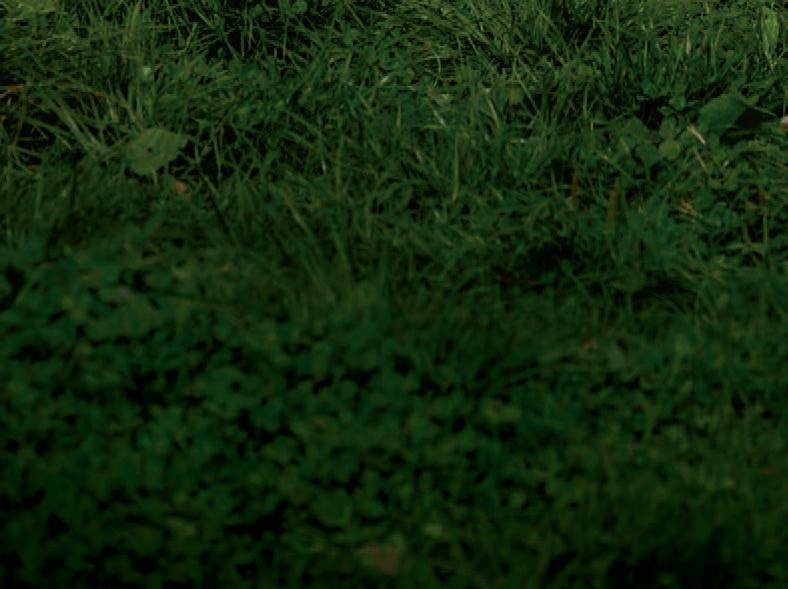

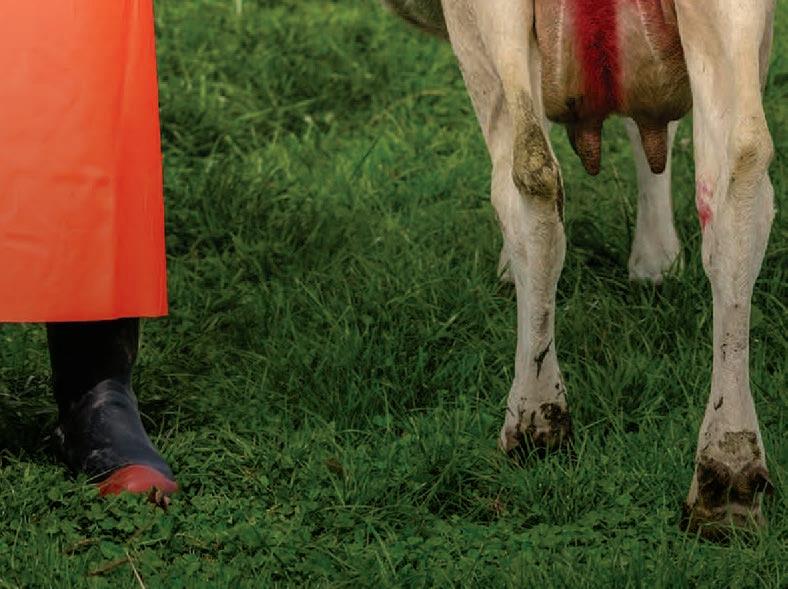
We’re here for the good of the country.




options are available to them, Dickens said.
ACROSS New Zealand
this year, 4000 men will be told they have prostate cancer, making it this country’s most diagnosed cancer, and the second leading cause of cancer-related death in men.
The Prostate Cancer Foundation of New Zealand (PCFNZ) is committed to being the voice of more than 42,000 men living with the disease in New Zealand, advocating on their behalf for better health outcomes today, and for future generations.
Now in its 10th year, Blue September is PCFNZ’s biggest fundraising event of the year and a month dedicated to raising awareness of prostate cancer.
It’s hoped that BLUE DOs up and down the country will raise more than $1 million of muchneeded funds, with every cent going towards providing essential wrap-around support services for men and their whānau living with prostate cancer.
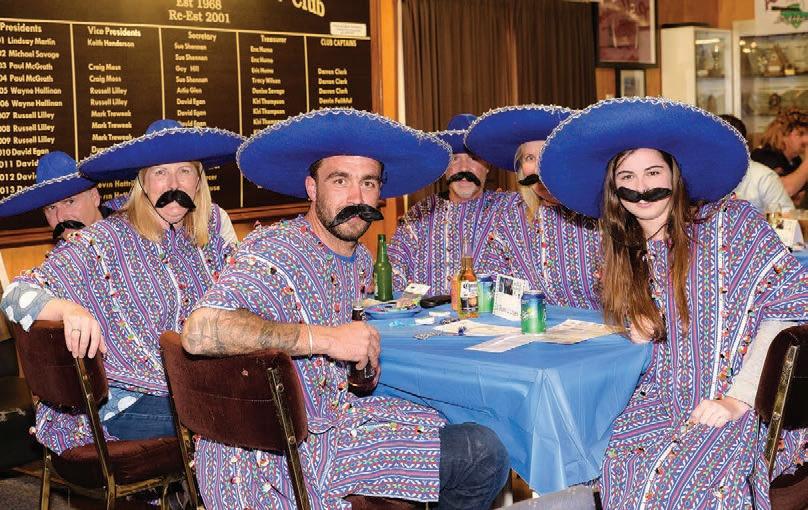
The foundation’s chief executive, Peter Dickens, said they’re excited to see the nation once again painted blue in support of the thousands of men living with the disease in NZ.
“Every year just gets better; we are blown away by the support we receive from across New Zealand during Blue September.
“Without the passion and commitment shown to us by our Blue September community, we would not be able to provide the services that patients and those close to them rely on every day across the country.”
In addition to supporting the essential services the charity provides to those affected, funds raised are used for research into the disease and its impact, and to create awareness through education and outreach programmes. They also enable the
foundation to advocate for better access to diagnosis and treatments that are so desperately needed, including calling for a nationwide screening programme similar to the breast, bowel and cervical cancer programmes. There is a dangerous myth that men don’t die from prostate cancer, they die with it, and that it’s an old man’s disease. That’s just not true. It’s devastating that in NZ we lose around 700 every year to this terrible disease. PCFNZ wants men to start talking about their health and taking positive action because if it’s caught early, it is also very treatable and so many more
“It’s extremely frustrating and New Zealand’s most diagnosed cancer should be an issue of national concern.

“Despite the evidence pointing to early detection and appropriate treatment making the difference between life and death, methods of detecting the disease, treatments and medicines for prostate cancer patients that are publicly funded in other countries are severely limited here, or even non-existent outside of the main centres.”
Whether it’s a chat around the BBQ or having a yarn while walking the dogs, Dickens said, a major goal of Blue September this year is to get men to talk about prostate cancer.
“We have come a long way, but the truth is all men over 50 need to chat to their doctor about prostate cancer as well as insist on a programme of PSA testing appropriate to them.
“This is even more important if they have a family history of prostate cancer, in which case they need to do it much earlier.
“The 42,000 men currently living with prostate cancer in New Zealand are not just a statistic, they are our dads, sons, granddads, and best mates who do not deserve to have the opportunity to share
The 42,000 men living with prostate cancer in New Zealand do not deserve to have the opportunity to share in the lives of their families taken away far too soon, when an achievable alternative exists.
Peter Dickens Prostate Cancer Foundation of New Zealandin the lives of their families and those around them taken away far too soon, when an achievable alternative exists.
“The social impact of this disease is immeasurable and we’re in danger of losing a generation of men to prostate cancer without a co-ordinated national approach. We’re indebted to the people that take part in a BLUE DO on our behalf – thank you, no idea is too small, too wacky, or too blue.”
MORE:
Support the one in eight Kiwi men and their families affected by prostate cancer – Do Something Blue this September. To find out more, or to register your BLUE DO, visit www. blueseptember.org.nz
MORE: See page 18
located in the back country.
OVERSEAS anglers will pay more to fish some rivers in New Zealand this season.
Fish & Game NZ chief executive Corina Jordan confirmed a designated waters licence will be introduced for the new season, which begins on October 1.
While most angling takes place in easily accessible lowland rivers and lakes, this season will mark the introduction of a new management tool to better protect NZ’s more fragile fisheries, which are often
“The new designated waters licence will see Kiwi anglers get a fairer share on some of the waterways that Fish & Game’s research has shown are subject to too much pressure – around 2% of the country’s rivers.
“The new licence category will help us manage angling pressure by spreading angling effort around so that it isn’t concentrated in certain areas, which detracts from the angling experience and also has the potential to negatively impact the fisheries.”
Non-residents will have to pay $40 per day to fish designated
waters, and may purchase only a maximum of five day licences for each Fish & Game region they want to fish in.
Local residents will pay $5 per region for the entire season on top of a traditional fishing licence fee.
Jordan said over the past 10 years, Fish & Game has received increasing complaints from resident and non-resident anglers regarding overcrowding in a small number of fisheries that will now be managed through the designated waters licence.
“Our research and monitoring show that a small percentage of non-resident anglers will intensely



fish a local area, not only putting pressure on the fishery but also displacing other anglers. We’ve
Our research and monitoring show that a small percentage of non-resident anglers will intensely fish a local area, not only putting pressure on the fishery but also displacing other anglers.
implemented this new fisheries management tool to help address that imbalance.”
In some fisheries, angler use has gone from a roughly 50:50 resident-to-non-resident split (in the early 2000s) to an 80:20 split favouring non-resident anglers. In most cases, pressuresensitive fisheries, now managed through the designated waters licence, share common features: the rivers have very clear water, offer excellent sight fishing, hold large average size trout, have high scenic value, and are often located in a wilderness or backcountry setting.
Aotearoa Forests Limited (AFL) is a well-established log exporter looking to purchase your standing trees in order to supply regular customer demand in China.








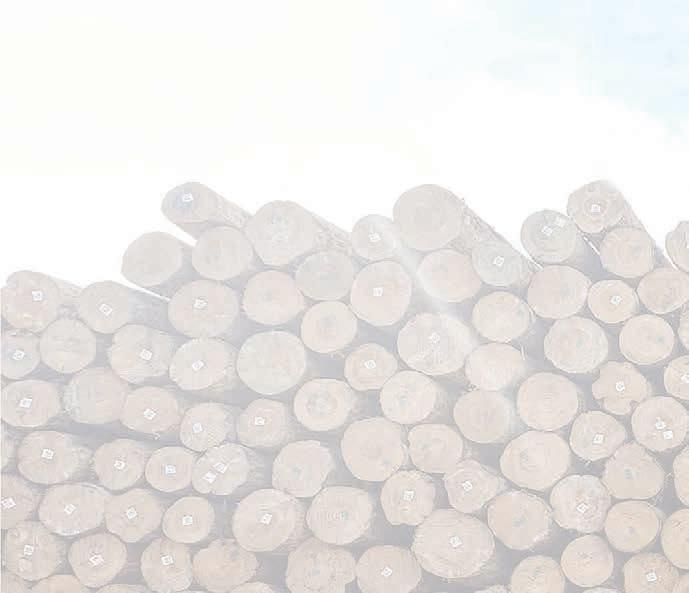
In selling your forest standing, you remove the risk of operational costs and volatility of log prices.
AFL use a local and reputable Forest Manager to organise the harvesting operations to ensure industry best practice is followed for environmental compliance and harvesting practices, which gives confidence that the forest owners objectives are also met.
At AFL we are not just harvesting Radiata Pines, but we are also specialised in these minor species, Blackwood, Cedar, Cypress, Eucalyptus, Larch, Old Man Macrocarpa, Poplar and Redwood.
We are interested in hearing from you and will be happy to have an obligation-free discussion about the protection provided to you by our contracts and how the process is managed.




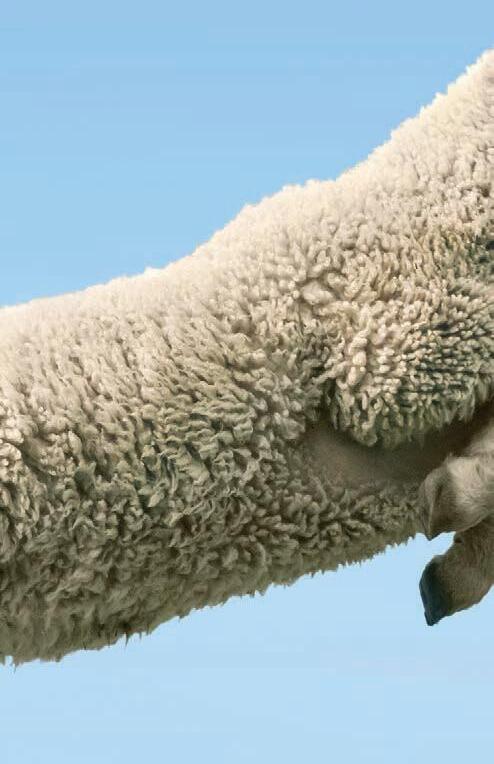
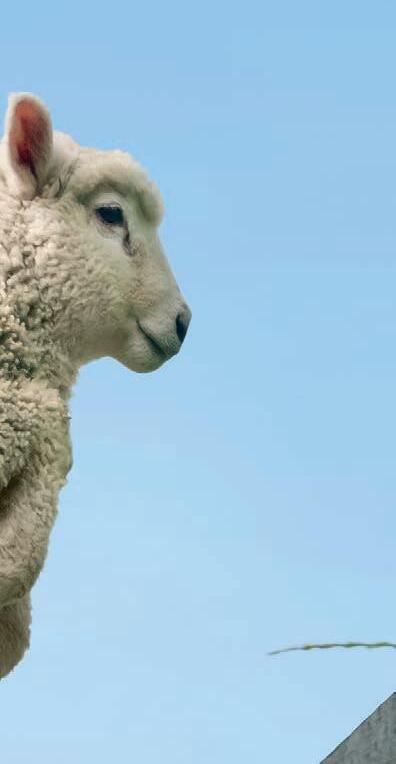
















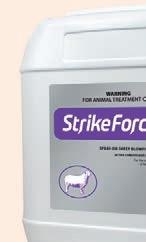

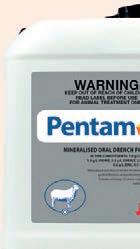





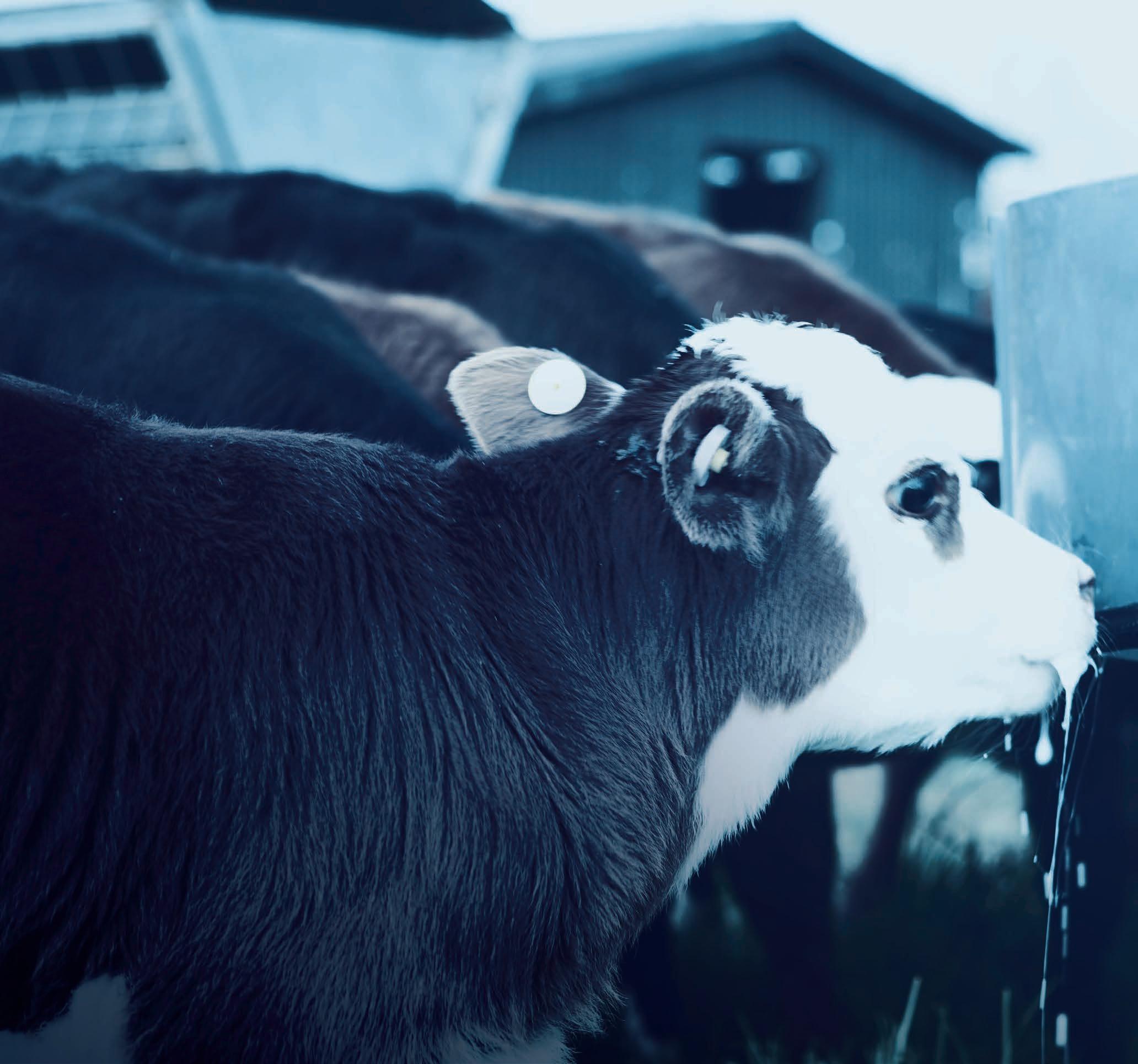











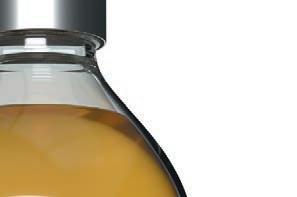

























ARECENT tour of Europe by New Zealand finewool growers took farmers to the market, building connections while showcasing their product from the farmgate to the shop floor.
Organised by exclusive finewool business Devold NZ, the European tour aimed at giving the growers a first-hand experience of how their premium merino wool is transformed into high-quality garments and displayed in the international market.
Sixteen growers from the Rakaia Gorge, Mackenzie Country and Central Otago were on the trip.
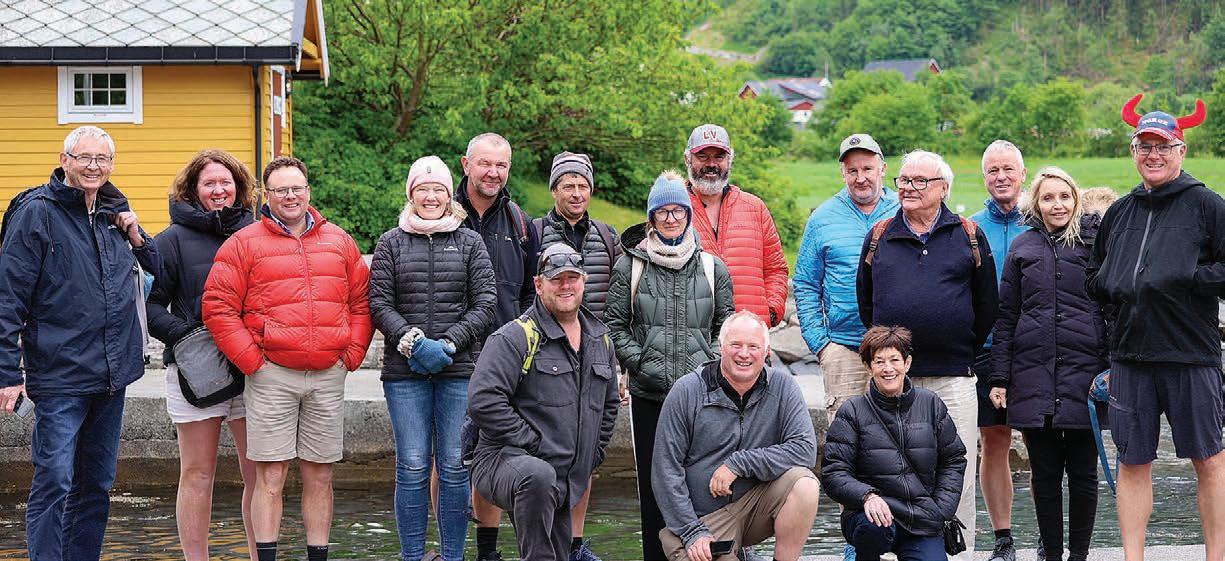
“One thing I am really proud of is the connection of like-minded farmers and everyone along the supply chain to produce a quality product,” Devold general manager NZ Craig Smith said.
“The tour was an opportunity for growers to see in person how their wool gets to the shop floor.”
Smith said it was a legacy moment to strengthen the bond with NZ wool growers and Devold, a company with a heritage dating back to 1853 at the forefront of wool garment production.
The tour started in Munich, Germany, where the growers attended the prestigious ISPO trade fair.


“This exposed the farmers to the vastness of the international market and showcased ISPO as the largest trade fair for the sports business in Europe.”
With brands and products from 50 countries and more than 80,000 attendees, the ISPO trade fair presented a significant opportunity for NZ growers to see how well-established and competitive Devold is in the international market.
The growers travelled to Lithuania to visit the Devold Mill, where the magic of wool transformation unfolds.
Here the woolgrowers were able to see their own wool being processed and turned into individual garments with state-of-the-art machinery standing testament to Devold’s commitment to producing garments of the highest quality.
“This was a moment of tremendous pride for these farmers.”
Travel moved on to Alesund in Norway, where the entourage met Devold chief executive Oystein Vikingsen Fauske, whose passion and dedication made an impression on the NZ growers.
The trip proved to be the beginning of a reciprocal relationship as Fauske and two other top executives from Devold plan to visit the growers on their stations in NZ next month.

Having opened a flagship store in Wanaka in 2021, Smith said, Devold is committed to promoting a sustainable and transparent supply chain through its Sheep to Shop programme. Selected NZ growers are required to supply a minimum of 60 bales of the finest merino wool each year, allowing the wool’s journey to be traced right from the sheep’s back to the store shelves.
For Sarah-Jane Perriam, owner of the Wanaka store and who runs Bendigo Station near Wanaka with husband Stew and brother-in-law Daniel, the tour struck a chord.
“I believe that a clothing brand should take ownership of how they produce their clothes.
“They should not only invest in the growers that produce the fibres, but the animals and the land as well, and Devold does that and so much more,” Perriam said.
“Clothing is made with wool produced throughout South America and Australasia and every garment comes bearing a swing tag with the name of the farm from which it was grown,” Perriam said.
“It is so important to create this kind of connection to the clothes,




to encourage consumers to really think about their choices.
“By being able to trace each item back to where it came from, we are starting a mindset shift towards conscious consumption, and shopping for longevity as well as quality over quantity.
“In my mind this was the logical next step.

“Our community, our followers and our planet demand this of us and I think every business should get involved. There has never been a better time to face up to the impact we are having on the world,” she said.

cultural students, many of whom fall in the young adult category.
Craig Smith DevoldSmith said the tour laid the foundation for a promising future for NZ’s wool industry and through a shared vision for sustainability, transparency and premium quality, Devold and its partners are set to make an indelible mark in the world of wool.
“The biggest thing is it’s all a big family affair. Devold is family owned and the growers and businesses Devold work with are all family owned.
“We need more growers who can grow our wool now so we can keep growing to meet the increasing demand.”
RESEARCH into the impacts of the inaugural rollout of the WellMates programme at Te Kunenga ki Pūrehuroa Massey University has shown promising results and outlined ways to strengthen its delivery, including taking it online.
The positive mental health and resilience programme, developed by Lincoln University, is being launched for a second year at Massey after researchers found it to have significantly benefited participants.
WellMates is designed to promote mental health and wellbeing to first-year agri-
Recent studies have shown farmers are prone to experiencing burnout, and young people between 17-24 are particularly vulnerable in this community. This group is often underrepresented in mental health promotion strategies despite making up a quarter of farmer suicides.
School of Social Work senior lecturer Dr Nicky StanleyClarke, who played a pivotal role in bringing the programme to Massey, has been among the researchers studying what effect WellMates is having.

She said the research has shown WellMates is having a positive effect in increasing
awareness and building upon existing knowledge of mental health.
“We conducted surveys on participating agricultural students before and after engaging in the programme, as well as a control group of agricultural students in the same year who didn’t attend. Students who participated in WellMates showed greater mental health and wellbeing knowledge than students who didn’t.”
A second round of funding from Massey Lincoln Agriculture Industry Fund (formerly known as Massey – Lincoln and Agricultural Industry Trust) has provided the opportunity for WellMates to also be offered online this year.
One thing I am really proud of is the connection of like-minded farmers.

Annette Scott NEWS Business

IXTY years of supporting farmers for a brighter farming future was celebrated in Mid Canterbury with the diamond anniversary of the Ashburton Trading Society, now trading as Ruralco.A group of early shareholder account holders, joined by Ruralco staff, gathered for the cutting of a 60th birthday cake on August 21, 60 years to the day since the formation of the impactful rural co-operative.
It all began for the ATS rural co-operative in 1963 when a group of innovative and ambitious farmers seeking a way to support agriculture and make farming life easier got together.
Together, around the dining table of inaugural chair and Mid Canterbury Federated Farmers president at the time Jack Brand, they sought a way to achieve lower input costs in agriculture to make farming more sustainable.
On August 21, 1963, the ATS supplier network was formed.
When ATS first began operating, agriculture was in a different era. Manual labour was more common than machine labour and New Zealand’s most dominant
SLICE: Ruralco chair Sir David Carter and chief executive Rob Sharkie –who has just resigned – cut the 60th anniversary cake.agricultural sectors were sheep, beef and arable farming. The government offered several production subsidies and export incentives that helped to support agriculture as an economic sector. The Trading Society promptly sought to secure alliances with farm product suppliers that would help them achieve their goal of offering lower product prices for their members.
Several local farm suppliers had already been flagged as potential allies for suppliers and
it was also decided to contact the oil companies as the directors recognised the significant impact any kind of reduction in fuel costs could have for members.
The co-operative has grown beyond its original catchment, now having a nationwide reach through its online presence and card network.
It boasts more than 3000 card merchants across NZ with more than 4000 shareholder accounts accounting for 20,000 cardholders using Ruralco to access compet-
NORTH ISLAND AGRICULTURAL ONLINE BIDNOW AUCTION
STARTS:
itive prices on a wide range of products.
The journey over six decades has presented its challenges; farmers and rural communities have faced many trials and tribulations, from droughts to floods, earthquakes and pandemics, snowstorms, subsidy losses and devastating financial crises.
In his address at the 60th birthday celebration, Ruralco chair Sir David Carter alluded to this.
“It’s been an impactful journey over 60 years, there’s been ups and downs and swings and roundabouts.
“It’s tough in farming at the moment and it’s been tough in farming in the past, but farmers are resilient, they adapt and they adjust their cheque books.
“As a Ruralco co-operative we have to adjust our business as well and it’s the loyalty of our shareholder base that makes Ruralco the success it is today and will do into the next 60 years for a brighter farming future,” Sir David said.
“With the deep roots of our cooperative we give rural businesses the opportunity to source better deals and know that their contributions deliver real value for their local communities, helping to support a sustainable future for NZ farming.”
“We will continue to support
our farmers. That was the original intent of our founding shareholders and it has remained unchanged.”
The celebrations coincided with Ruralco chief executive Robert Sharkie announcing his resignation after six years in the role and eight with the co-operative.
M7152 691hrs & Loader
• Kubota M7151 868hrs Cab
• Kubota M7171 2,765hrs & Front 3PL
• Kubota M135X 6,272hrs & Loader
• Kubota M126X 6,742hrs & Loader
• Kubota M100GX 4,650hrs Cab
• Kubota M9540 3,363hrs & Loader
• Massey 5445 2381hrs & loader
• Case IH JXU105 4620hrs & loader
• Case IH CX70 6,780hrs & Loader
• Claas 640 Arion 7731hrs Cab
• Landini Ghibi 90 3901hrs & Loader

• Unused Quickie C13S loaders & 4in1 Hay Equipment
• New Holland FR9080 Forage Harvester
• Unused New Holland Megacutter 860P Mower
• Unused New Holland Duradisc F300 Mower
• New Holland Square Baler BB1290 Plus
• New Holland Square Baler BB9060
• New Holland Square Baler BB950A
• New Holland Roll Baler 135 Combi Bale Wrap
• New Holland Roll Baler BR6090 Combi Wrap
• New Holland Roll Belt 150 Cropcutter Baler
• New Holland Roll Belt BR740 Cropcutter Baler
• Lely Roll Baler 245 Combi Bale Wrapper
• McHale 991B Trailing Bale Wrapper
• Hustler Bale Feed Out Unrolla LM105
• Hustler Soft Hand Bale Grab
• Fella SM 2460 3Pl Disc Mower
• Robinson Super Comby Feed Wagon
• Giltrap MSX100 Feed wagon
• SIP Star 850/26 & Spider 900/8 Rakes Tillage & Seeders
• Unused NH Mouldboard 5 Plough
• Unused NH Mouldboard 4 Plough
• Kuhn Multi-Master 123 5 Plough
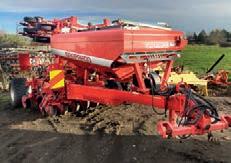
• Gaspardo Gigante 4mtr Disc Seeder
• Breviglieri 3mtr 3Pl Rotory Hoe
• APV PS250 Seeder & Tyned Weeder
• Hustler Katipoi 890 3PL Sprayer
• Vaderstad RX450 Roller Trailing
• Maschio Powerharrow DMR3000 SD
• Aitchison Cambridge Roller 3m
• Sam 5 Tonne Trailing Spreader ATV & Lawn Mower
• Kubota RTV-X1120 Side by Side

• Kubota RTV-900 Side by Side
• Kubota F3680 Lawn Mower
• Kubota GR1600 Lawn Mower
• Kubota BX2670 Lawn Mower
• Cub Cadet Lawn Mower
Tractors
• New Holland T4.100F 0hrs, Narrow
• New Holland Boomer 50, 0hrs & Loader
• New Holland Boomer 35, 0hrs & Loader
• New Holland Boomer 25, 0hrs & Loader
• New Holland T7-185 5,910hrs & loader
• New Holland T7-165 1,086hrs & Loader
• New Holland T6-175 3,883hes & Loader
• New Holland T6-175 7,323hrs & Loader
• New Holland T7050 9260hrs & loader
• New Holland T6070 4,170hrs Cab

• New Holland T6050 4,074hrs & Loader
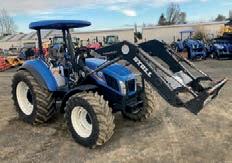
• New Holland T6050 5,140hrs & Loader
• New Holland T6030 3,195hrs & Loader
• New Holland TS135A 8726hrs & loader
• Kubota M7171 2,295hrs & Loader
• Kubota M135GX 6286hrs & loader
• Case IH MUX135 5,400hrs & loader

• Case IH CVX1190 8,990hrs Cab
• McCormick MC105 & loader
• Deutz K610 3,398hrs & Loader
• Massey Ferguson 6,368hrs 8680 duals
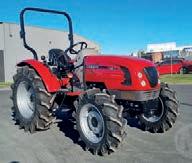
• John Deere 6620 & Loader
Grape Harvester
• Braud 9060L SP 4,495hrs Harvester
Tillage & Seeders
• Unused NH Mouldboard 5 Plough
• Unused NH Mouldboard 4 Plough
• Vaderstad Rapid RDA800S Disc Seeder
• Vaderstad Rapid RDA600S Disc Seeder
• Vaderstad Rexius RS 820 Roller
Sir David Carter Ruralco chair
“I have thoroughly enjoyed my time at Ruralco, the challenges it has provided, and I am very proud of Ruralco’s achievements during my time at the helm,” Sharkie said.
“It is the dedication and passion of the people who work for Ruralco that has made these achievements possible and I commend them for their efforts and wish them well for the future.”
Ruralco’s GM people and culture Tony Aitken will step into the role of acting CEO from September 1 while the board looks for a permanent replacement.
• Horsch Simba Pronto DC6 Disc Seeder
• Horsch Simba Pronto DC6 Disc Seeder
• Monosem NG4 plus Vac Planter 12 Row
• Kverneland Monopill SE 18 Row Planter
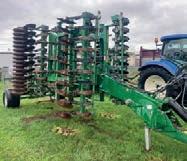
• Taege 300EDW 3mtr Tyne Seeder

• Aitchison Roller Drill 20row Seeder
• Alpego RK350 Power Harrow Disc Seeder
• Jean De Bru Monoliner VRV36 Offset Disc.
• Simba Great Plains SL500 Cultivator
• Amazone Catros 5501-T, 5.5m Speed Till
• Lemken Diamante Reversable Plough 7 Farrow
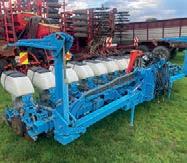
Hay Equipment
• Unused Khun 8131 Hay Rake
• Unused New Holland ProTed 690 Tedder
• Unused New Holland ProTed 880 Tedder
• Unused New Holland C820 Rotor Hay Rake
• Unused New Holland Megacutter 860P Mower
• Unused New Holland Duradisc F300 Mower
• Gowell Roll Baler F1 F125 Combi Bale Wrap
• Gowell Roll Baler G5020 Trailing Wrapper
• Massey Ferguson 187 Square Baler
• Kongskilde GSX3206 3Pl Mower
• Kongskide VM22-2 Mixing Wagon
• Giltrap RG21 Side Feed Out Wagon
Extras
• Mailleux Loader Frame MX T10
• Agris Quip 3Pl Spreader
• Husqvarna R216 Ride on Lawn Mower
• Husqvarna TC342 Lawn Mower


 Neal Wallace NEWS Health
Neal Wallace NEWS Health



THE current shortage of nurses working in rural practices could become more accentuated with recent pay parity and pay equity agreements excluding those in community and primary facilities.

The wage difference between those working comparable jobs in communityowned rural hospitals and those run by Health NZ (Te Whatu Ora), could now be $20,000 a year following those agreements.
“If nurses are doing an equal job then they should get the same pay regardless of where they work,” Rural Health Network (Hauora Taiwhenua) chair Fiona Bolden said.
Adding to the disparity is the 5% increase in the annual capitation payment to community and primary health providers, which she said is not enough to meet pay parity let alone cover rising costs.
Bolden said this is happening as the international demand for nurses soars, especially from Australia, where they can command much higher wages.

The nurses pay equity agreement follows six years of court action and lobbying by unions. Bolden said to extend that to include those working in community or primary facilities would take a comparable period.
Some practice owners are sacrificing other business investments or their own income to try to pay competitive wages to their staff.
“It seems a no-brainer to at least meet pay parity for community care nurses especially when you look at the health reforms, which are about care in the community.”
The pay equity settlement, costing $200 million a year, was recently announced between Health NZ, the New Zealand Nurses Organisation (NZNO), and the Public Service Association (PSA).

The pay equity agreement with nurses will see them receive a further $15,000 gross lump sum, in addition to the $10,000 already received, along with pay increases ranging from 4.5% to 6.5% depending on seniority.
This is backdated to March 7 last year.
Mark Powell, Health NZ’s manager for community health system improvement, and innovation and commissioning, said the recently announced pay rates apply to nurses and healthcare assistants, aged care workers, disability support workers, technicians and orderlies that it employs.

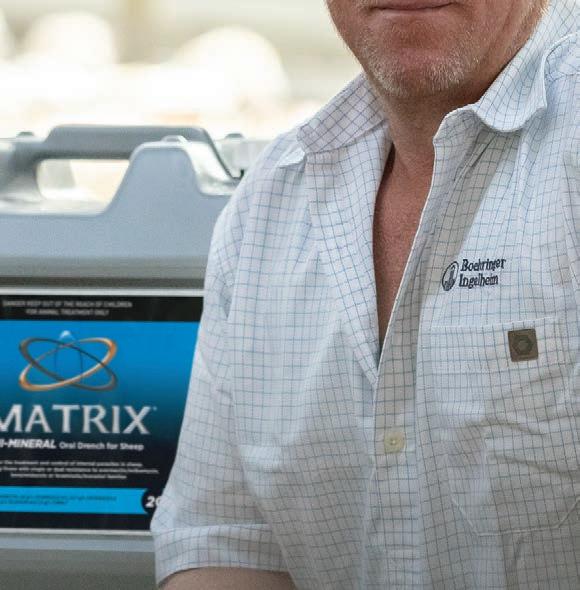
The pay equity settlement does not negate the contribution of primary and community nurses but reflects the time and effort that the NZNO, PSA and Health NZ invested over five years to progress the claim since it was formally raised by the unions in 2017.
“Both the government and Te Whatu Ora have acknowledged that this funding is not expected to achieve pay parity but is a significant contribution to moving towards pay parity for this workforce.
“For providers who have accepted and received funding, there is a requirement to report back on use of funding, including wage rates.”
Powell said the 5% lift in funding for primary and community providers is the largest increase in over 10 years and is to meet cost pressures, including workforce wages.
“We are aware of the staffing challenges


faced in all professions by rural health providers and we are progressing workforce initiatives to help rural health providers meet staffing requirements.”
It has introduced a $9100 accommodation allowance so general practitioners can live within 30km of a rural practice, funding for locums to cover rural nurses and doctors, a nurse practitioner training programme and initiatives to grow the permanent and locum workforce.
EQUAL PAY: If nurses are doing an equal job then they should get the same pay regardless of where they work, says Rural Health Network (Hauora Taiwhenua) chair Fiona Bolden.
THE proposal from the six National Science Challenges leaders for a crossstakeholder National Food Strategy, “Science leaders call for NZ food strategy” (July 24) is welcome and something for the incoming government to consider.
It will allow a conversation on how New Zealand can best navigate the complex economic and environmental challenges we face.
This will include the role of biotechnology and particularly the regulation of gene editing (GE), which the National Party has put on the political agenda by its policy.
National’s announcement has cut short the wider conversation about GE in agriculture by a bold policy to enable commercial release of GE organisms and exempt products of New Genomic Techniques from testing, tracing and labelling.

NEXT month is Blue September, a Prostate Cancer Foundation of New Zealand campaign aimed at raising funds and awareness about a disease that claims 700 Kiwi lives a year.

More than 4000 people are diagnosed with prostate cancer each year. It’s this country’s second highest cause of cancer death in men, behind lung cancer.
Up until last year I wouldn’t have taken much more than a passing interest in the campaign.
But that’s changed. August 19, 2023 marked 12 months since I underwent surgery for prostate cancer.
It seems a lifetime ago, but the fear and uncertainty that surrounded the months following my diagnosis will likely remain with me forever.
In many ways I am the prime target of the Blue September campaign. I’m in my early fifties, active and relatively fit. I don’t regularly visit my doctor and, like so many, thought prostate cancer affected only old men.
How wrong I was.
Last year started so positively. In February, my wife Clare and I took part in the Southern Lakes Ultra, a six-day, 270km run through the mountains and back blocks of Hāwea, Wānaka and Queenstown.
It was an amazing experience, and inspired us to seek more adventures together. We weren’t expecting cancer to be the next “adventure”.
In hindsight, there were signs all was not well.

My regular dashes to the toilet, particularly after a few beers, were a standing joke for years. But it had started to play on my mind and when blood first appeared in my urine my concerns rose.
Clare was all too aware of my multiple nightly toilet visits and insisted I visit my GP.
The following months were a whirlwind.
My prostate-specific antigen (PSA) levels were high enough to be of concern but a follow-up blood test weeks later showed they had already jumped significantly.
I was referred to a specialist. There were tests, scans and biopsies, which ultimately led to a meeting for the final diagnosis.
Deep down I knew it wasn’t going to be great, but being told you have prostate cancer is still a kick in the guts.
The positives were my “young” age and
that the cancer had been picked up early and was treatable, either through radiation therapy or surgery. But to do nothing would eventually be fatal.
My mother and Clare’s father had both died from cancer, so we were well aware of its impact. Telling our two teenage children was tough, but kids are resilient. They rallied around me but have long since tired of hearing about my “cancer scare”.
Health insurance meant I received surgery relatively quickly. I’m lucky – the prognosis is good and there will be plenty more adventures ahead.
But my experience does highlight the importance of regular health checks and of taking action when things are clearly not right.
If I’d ignored the signs, like some blokes undoubtedly do, the outcome could have been so different.
I have been a journalist since 1987 but, being someone who values their privacy, I cringe at the thought of writing about myself – I much prefer telling other people’s stories.
But occasionally you have to put yourself out there in the hope others might gain something from your experiences.
Some things are more important than a bit of privacy.
The economic benefits of biotechnology are cited as the main justification for ending strict regulation including of gene editing.
The Productivity Commission has published a report supporting the biotechnology industry.
The chief scientist has also written to the prime minister in support of a review of regulations, which the government is now undertaking for biomedical use of gene technologies.
When National Party leader Chris Luxon discussed the GE policy with Jack Tame on OneNews he estimated the premium for GE-free exports was about 5%, and nothing to be concerned about.
But the potential premium for GE-Free/ non-GMO exports is something that the Productivity Commission did not evaluate in its Horizons review, but should have, and it still needs to be done.
Without a proper evaluation of the economic benefit of GE-free status for producers and exporters it is not possible to make informed decisions on trade-offs and the most appropriate applications for an ethical biotechnology strategy for Brand NZ.
Until we can put a dollar value on our GE-free exports any promises of an economic boom from GE in agriculture remain just that: promises.
How we regulate and apply biotechnology into the future is an important priority for any National Food Strategy. With a significant premium at stake we have to have the conversation about protecting organic and GE-free production.
In my view
THERE has been a lot of commentary in recent weeks regarding the wool sector, including Alan Emerson’s Alternative View article in these pages, “Synthetic carpets are getting a free ride” (August 21) .
We welcome the conversations and debate about wool and the sector’s fortunes – it shows farmers care, and how committed they are to securing a brighter future for growers and the industry.
At Wools of New Zealand (WNZ), a company owned by 2,100 proud sheep farmers, we’ve changed our strategy significantly over the past two years.
We’re now selling branded woollen carpet through retailers and we’re just about to launch a commercial wool tile range. It hasn’t been easy and we’ve learnt quite a few things along the way.

WNZ chose to manufacture offshore using wool grown here because this offered us and our growers the best chance of success.
Rather than “competing”, that decision to partner with overseas businesses has been about driving growth despite a limited balance sheet.
We have been working with Zenova, a fully vertical manufacturer of carpet in Turkey ... it has ploughed many millions of dollars into increasing capacity by 40%.
The past 25 years have seen a continued decline in the demand for strong wool driven by ongoing decommissioning of production capacity and capability, globally and domestically.
There has been little to no investment in the development of manufacturing systems for wool products, including in the New Zealand industry, coupled with divestment of production capacity worldwide.
Over the past three decades,
Do
many strong-wool global manufacturers, including spinners, have responded to falling consumer demand and switched their factories to synthetic fibres, or closed.
Of the remaining woollen manufacturers, many are smaller scale and struggle to compete with large synthetic manufacturers, so focus more on niche offerings to the market.
New product development, investment in production and global expansion coupled with commercialisation will lead to growth, but that requires investment. Without that, the wool industry will just have to wait patiently for prices to increase.
WNZ is a farmer-owned business set up to improve outcomes for its sheep-farmer shareholders. We are working to establish up a global business but we do not have the balance sheet to forge ahead with new opportunities at pace.
We are also working to do that on the back of the pandemic and poor wool prices – WNZ’s only source of capital at a time when costs are rising. There have been challenges, not least Cyclone Gabrielle and the flooding damage to the Napier wool scour as well as softening global markets for lamb.
If our industry wants to see demand for strong wool growing, we need access to increased capacity, combined with improved technology.
To that end, we have been working with Zenova, a fully vertical manufacturer of carpet in Turkey, because they have the resources and the willingness to invest and are world leading in terms of production capacity.
Over the past three years, Zenova has ploughed many millions of dollars into increasing that capacity by 40%. That will be far more than the entire NZ wool industry has invested in that time.

We are fortunate that one of the largest wool spinners and carpet manufacturers in the world is keen to work with us. We have limited capital, our investment is mostly people, skill and energy, but through this relationship, we will be able to grow.
WNZ’s job is to take these NZ
wool products to the internal market in Australasia as well as to the United Kingdom, Europe and United States markets. That in itself is a significant task that will have its challenges, but if we want to change the industry, it must be done.
WNZ supports all of the initiatives being pursued across the industry to grow the demand for wool. No one entity will make the difference by itself; it will be the efforts made by many businesses who are prepared to make the effort, invest and take the risk. And they will be looking for a return on their investment and rightly so.
Investment in production and new opportunities carries risk. Some will not succeed, but one thing’s for sure: not investing in anything will deliver absolutely nothing.
There is now more collaboration and unity in the wool sector than ever before. Not all initiatives will be successful, however the likes of WNZ, Wool Research Organisation of New Zealand (WRONZ) and
Why not write it yourself?
We’re keen to hear local stories about the innovators, inspirations and characters that keep our communities ticking over. Farmers tell the best stories and we want to hear yours. yourstory@agrihq.co.nz
Wool Impact are all working together to achieve a common goal – to lift the fortunes of the strong wool industry.
And there are some great initiatives happening.
As an example, WNZ is about to launch our commercial wool tile range at a price competitive with the high-end synthetic tiles market.
This is the result of an 18-month testing programme in conjunction with manufacturers and growers and will take the product to a wider audience with a growing interest in the beneficial natural properties of wool flooring.
Wool Impact has been supporting WNZ in the development of new products along with Wool Source, founded by WRONZ. This takes time as the types of products have never been made before. We are talking brand new technology with product benefits that only wool can deliver and this has been supported by outside engineers who are experts in their fields.
Rather than criticising farmers and the organisations and businesses who are making an effort to increase demand for wool, we should be applauding them. Most of those doing this work are underfunded. They are doing the hard yards and working in practical but innovative ways to change the fortunes of the strong wool sector.
Got
farmers.weekly@agrihq.co.nz
cost-effective mitigation tools for farmers and a pricing system that won’t lead to emissions leakage to less-efficient countries.
I agree.
For the record I don’t agree with any taxing of production. I don’t accept the current methane warming formula, I remain unconvinced by much of the science, and the Paris Accord totally exempts food production.
In addition, as BLNZ chair Kate Acland pointed out, farmers “have been reducing emissions annually by 1% for the past 30 years”.
But the issue isn’t what I think, it is the perception of the NZ public – and that’s where we have a problem.
LAST week’s announcement of the proposal to tax farmers on their emissions came like the classic bolt from the blue.
I wasn’t expecting it this close to the election.
It doesn’t reflect well on the rural community’s place in the New Zealand economy.
To start with a brief history lesson: He Waka Eke Noa (HWEN) was floated as a collaboration between farmers and the government to try to establish a payment system for the greenhouse gases methane and nitrous oxide.
The subsequent discussion bears witness to the dysfunctionality of our sector as Beef + Lamb NZ (BLNZ) and DairyNZ did what they could to sideline Federated Farmers and pursue their own agendas. They were, in my view, outclassed by the Wellington bureaucracy.
The good news is that the failings of the levy organisations encouraged the formation of Groundswell, which has had a major effect on farmer politics and for the better.
Groundswell has been responsible for positive change, certainly with BLNZ.
We now have a new HWEN alternative that, while still a tax on production, is a lot better than previous alternatives.
We will have a split gas approach, the dates have been pushed out, the price will be set at the lowest possible level, sequestration will be accepted and further consultation is sought.
The National Party response, surprisingly in my view, was to suggest another bureaucracy while pushing the start date out further than the government’s.
Federated Farmers was first out of the blocks, saying it was concerned the new HWEN would put farmers out of business as there would be a 20% reduction in sheep and beef farming and 5% in dairy.
President Wayne Langford told us that the “announcement is completely tone deaf to the reality rural New Zealanders are living with”.
Langford went on to outline the Feds bottom line. It wants a review of the methane targets, viable and
It seems to me that the government thinks there are more votes in taxing farmers for their GHGs than not. Labour is currently losing ground to the Greens and they think that taxing farmers will help reverse their fortunes.
Sadly, I think they’re right and, as I said, it’s largely our fault.
A good example was the three part “investigation” by state radio RNZ, entitled Cows vs Crown. The little darlings at RNZ told us “how agriculture killed a climate tax –again”. They concluded with the headline What Killed the Plan to Price Agricultural Emissions.
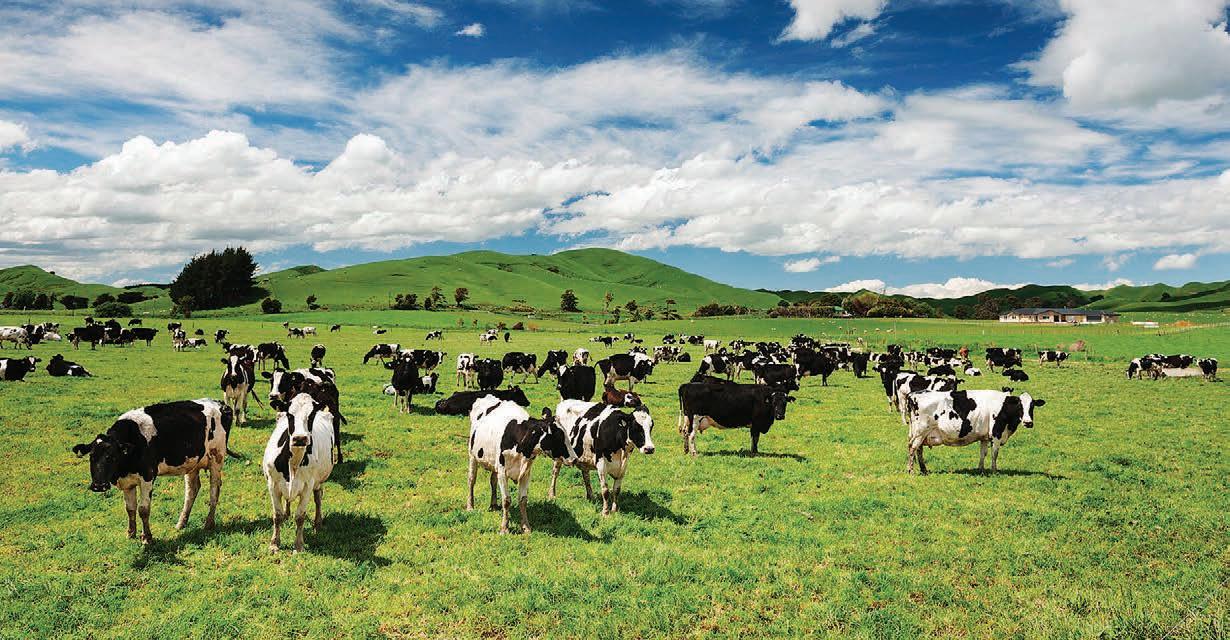
They got it wrong in several key areas. The most glaringly was that agriculture hadn’t killed anything. The plan to tax agricultural emissions was announced while the RNZ programme was running, which showed how out of touch RNZ was.
They certainly gave me the sincere impression of being anti farmer and blissfully ignorant of the harsh realities of farming today.
That was compounded by their statements after the HWEN release when they proudly stated that “new targets will force farmers to reduce their emissions in order to sell to export markets”.
As I’ve previously written, I remain totally unconvinced that reducing emissions will give us entrances into any new markets or save us being excluded from those we currently service.
That was compounded by the mainstream media basically ignoring the entire debate except for the odd short headline, and there’s the problem.
MAKE OURSELVES HERD: The ag sector is in urgent need of a strong, single voice to advocate for itself, Alan Emerson says.


Federated Farmers, as to stay in business it needs to accurately reflect its members’ views.
I have considerably less for the levy organisations, although the jury is out on BLNZ. I remain
unconvinced it has the grunt to counter the Wellington bureaucracy.
What needs to happen and now is for the sector to have a strong, single voice. If the government
believes there are more votes regulating farmers than will be lost from farmers then we have a major image problem.
The solution is in our own hands, but we don’t have time to waste.
as a result of the Uruguay round of trade negotiations has now come to an end, firstly because there are insufficient judges appointed to hear cases brought before the Disputes Body and secondly because of a rise in protectionism.
The first is as a direct consequence of a refusal by the administration of former United States president Donald Trump to make the necessary appointments.
Allan BarberMeat industry commentator: allan@barberstrategic.co.nz, http:// allanbarber.wordpress.com
VERY recently I wrote about the value that New Zealand’s trade negotiators have extracted from concluding free trade agreements with several countries and trading blocs, including China, Malaysia, the United Kingdom and European Union, as well as the broader Comprehensive and Progressive Agreement for Trans-Pacific Partnership (CPTPP) and ASEANAustralia-New Zealand FTA with our Pacific neighbours.
For the past quarter of a century it has been possible to request consultations with other countries under the Disputes Settlement Understanding and, if no agreement can be reached, take the case to the WTO’s Appellate Body to overturn illegal obstacles or subsidies put in place to prevent trade access.
In recent years New Zealand has won decisions against Australia for blocking imports of apples and Canada for the provision of subsidies on its domestic dairy production. But the WTO’s rules have become harder to implement with the rise in global protectionism and the lack of judges.
of WTO negotiations even more unlikely.
Vitalis warned that trade is no longer seen as unequivocally positive and its social licence is very fragile, because the world has depended on US leadership –which it no longer provides.
It is very important not to get caught in the crossfire of geopolitical tensions between powerful economies, for instance China and the US.
The world has changed substantially in the past 15 years with the emergence of India and the unstoppable rise of China, which is the main trading partner of 134 countries, including NZ. Another change has been the increase in public expectations of trade agreements, which are now subjected to much more public scrutiny.
He outlined the challenges facing our trade negotiators, both old and new. The former come predominantly under the headings of tariffs and subsidies, which affect export prices on average by between 6% and 14%.
My position, as I’ve stated, is that the government believes there are more votes from taxing farmers’ emissions than the votes that will be lost by taxing those emissions.
If a government, any government, feels that their votes will increase by legislating against agriculture we need to get our act together, combat the perception and do it now.
I have considerable respect for
So it was a timely reminder of how much work goes into bringing these deals to a successful conclusion when Vangelis Vitalis, the chief negotiator who led these negotiations, addressed the delegates at the Red Meat Conference on the topic of trade in a time of turbulence.
He began by telling us the period of golden weather that started with the World Trade Organisation’s formation in 1995
Arguments against the WTO have strengthened recently on the grounds that it favours stronger countries and multinational corporations, which places smaller, less developed economies at risk of their domestic industries being overwhelmed.
Critics maintain the WTO favours richer countries, which tend to get what they want, and although the US is clearly one such economy, a Republican victory in the next election would almost certainly make a successful conclusion of the Doha round
Thirty years ago the EU and US were responsible for the bulk of the world’s subsidies, but now China and India are also subsidising their farmers. New challenges involve the inclusion of environmental provisions in trade agreements and ratification by multiple national governments in the case of the EU.
The number of environmental regulations to be complied with has risen to 3500 and these must be answered with factual sciencebased answers, not only when
It seems to me that the government thinks there are more votes in taxing farmers for their GHGs than not.
I’m finding that the most interesting part of our journey towards the moat-model isn’t the destination – it’s the firststep opportunities that are right in front of us today. Done right, these set us up for the future while generating at least some real income now. Through these marginal diversifications and experiments, we are going to inch our away out of the commodity beef business.
These opportunities are a local hive and honey collaboration, agroforestry plantings designed for both the cattle and Emissions Trading Scheme payoffs and incoming biodiversity credits.
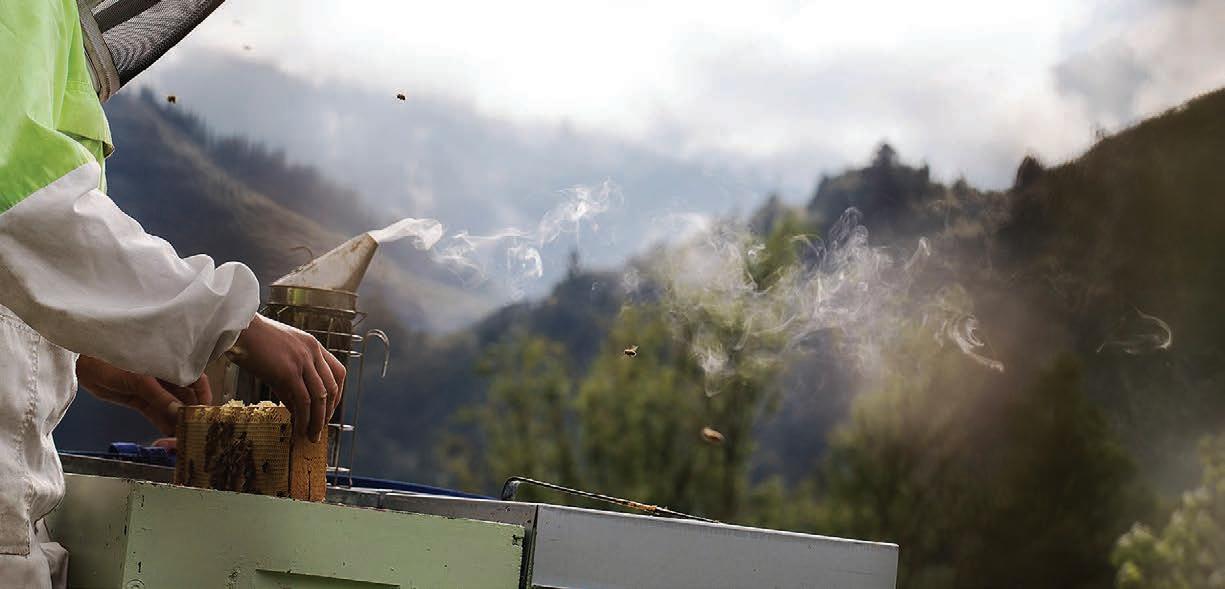
IN THE long-term, we’re going to build a moat around our family farming business. We’ll have a directto-customer food brand built around health, environmental regeneration and customer experiences unique to our little patch of the planet. Our key metrics will be customer feedback and product quality. We’ll probably ignore the meat schedule. But we are a long, long way from that future. Today, our Angus cattle are still trucked to a large processor, with the finished product going God knows where around the world. For now, we are a commodity beef business.
Continued from previous page
signing the original FTA, but also at the regular annual reviews.
FTAs are not set in stone and negotiators must update the validity of claims with scientific justification each year. As an example, before it was prepared to ratify the NZ/EU FTA, the Dutch government required justification of the level of food miles content of our exports to ensure their decision to force their farmers to reduce livestock numbers did not cause leakage – that is, a net increase in global emissions. This was answered satisfactorily, while in contrast the South American MERCOSUR trade partnership cannot gain EU ratification because of its inability to answer the Amazon deforestation issue adequately.

In an entirely different product area, the EU has prepared a carbon assessment system to apply to imports of steel.
Vitalis gave some examples of non-tariff barrier work that has directly benefited the meat industry: achieving an extension
I think these are great first steps. They allow us to explore new forms of land use without the need for significant investment. They don’t feel particularly risky, and that’s reflected in their minimal revenue return.
Like all business decisions, this work comes at a cost. Instead of poring over agroforestry species lists, ETS requirements, carbon price research and of course planting, we could be doubling down on the beef.
Expanding the farm, leasing more land and increasing the stocking rate are all options too –but less realistic given our size and family business structure. Similarly, we could go down a well-travelled margin-seeking route and enter into a compliance and labelling framework with a leading processor – something
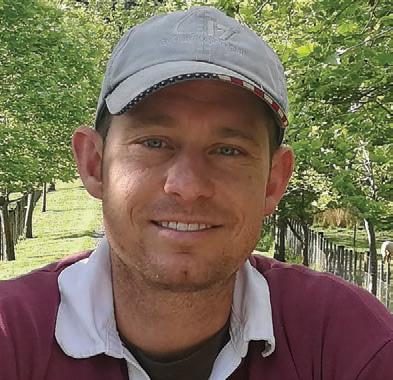
of expiry dates, which saved $7 million, changing regulations on sealing cartons of liver worth $30m, and gaining pre-approval for entry at the border with a saving of $20m.
Notwithstanding the hard work invested in concluding the various trade agreements, it is estimated 40% of the benefits are
like Silver Fern Farms Carbon Zero Beef range or (if we were in sheep) Merino NZ’s ZQRX regenerative certification and premium programme. We could also chase margin by going certified organic or partnering with a niche processor. All are good options too and may well be a part of the business going forward. For farmers who are interested in changing their systems to make a margin, there seem to be more and more options available.
Ultimately, though, these margin-seeking plays should match farmer’s values and interests. Our values and interests sit around ecology, regenerative practices and community building – pushing us towards options like agroforestry and biodiversity credits.
I can imagine farmers who are led more by data and hard-science would get a kick out of controlling their carbon life-cycle count, and there are others who would love to work with international fibre brands more closely through something like ZQRX.
I see our margin-seeking plays serving as bridges to the moatbuilding future we’re aiming for. We have a hive and honey partner
preferential tariffs; assumptions that deals are only for goods exporters, especially dairy and meat, and do not cover services like licensing procedures for engineers; inability to fill in the various application forms in spite of tools available on the Ministry of Foreign Affairs and Trade website, and also possibly a need for more trade promotion missions to FTA partners to increase awareness.
who is focused on diversity of feed for the bees, which encourages us towards more diversity in our tree planting. In designing our agroforestry, we’re also thinking about how our actions today might set us up for future production systems like nuts or poultry.
The promise of a biodiversity credit system has us exploring what native species are left in our bush blocks and how we might integrate their protection with some eco-tourism plays down the line. It’s exciting.
Ultimately, seeking margins will come down to us as a family. We’ll need to learn to be agroforesters and ecologists as well as farmers.
But we can’t be expected to traverse the commodity-tomargin-to-moat journey alone. We need support from industry, local and central government.
So far, financial and technical assistance from Northland Regional Council and the Kaipara Moana Remediation team have been instrumental in kick-starting our planting programmes.
Looking ahead, we’ll need a robust biodiversity credit framework. We’ll also need an ETS with rules that work for small landowners and a carbon price that genuinely reflects the severity of the climate crisis and isn’t depressed by short-sighted, polluter-friendly government policy as it has been.
Shorter value chain retailers that value our environmental credentials and help tell our farm story would help too – like Ooooby (out of our own backyards) or Supie supermarket.
Ultimately, though, seeking margins will come down to us as a family.
We’ll need to learn to be agroforesters and ecologists as well as farmers. We’ll need to accept additional compliance to play in new frameworks.
To achieve first-mover advantages we’ll need to invest time and money with no guarantee of return. When experiments fail –which they will, and have already – we’ll need to be okay with it and keep going.
In the next article, Dave will talk about what it takes to build a moat around a farming business. For now, my family has a shallow ditch with promise.
lost through poor implementation, mostly by exporters who may be unaware of the more favourable terms and conditions available to them.
Reasons for poor implementation include low awareness of FTAs; lack of information about how to obtain
This list confirms the need for our exporters to work harder at understanding the detail of FTAs and tariffs applying to different product categories, using the assistance from government departments and industry organisations available to them if they cannot work it out for themselves. In particular the red meat and other agriculture sectors can consult the government hit squad of MFAT, the Ministry of Business, Innovation and Employment and the Ministry for Primary Industries as well as Federated Farmers, Beef + Lamb NZ or other sector representative bodies.
The world has changed substantially in the past 15 years with the emergence of India and the unstoppable rise of China, which is the main trading partner of 134 countries, including NZ.
Sheep milking wouldn’t have been the choice for many in the late 1990s when Miles and Janet King bought a plot of land near Masterton, but they thought it would suit their skills. Having built a thriving cheese and genetics business over the past 25 years, they’re ready to pass it on. Bryan Gibson reports.


JANET and Miles King’s start in the sheep milking trade got off to a rough start.
They had stocked their farm with milking ewes, bred from crossing Coopworth ewes with East Friesian genetics, only for the company that agreed to buy their milk to have a change of heart.
The couple decided to have a go at making cheese themselves and Kingsmeade Artisan Dairy was born.
Being early adopters, the Kings had to make their own way through the challenges of compliance and food safety.
“The compliance people only thought of cows, of dairy factories dealing with cow’s milk,” Miles says.
“We luckily got quite a lot of help from what was MAF [the then Ministry of Agriculture and Forestry].”
Miles knows so much about the process now that he’s often consulted by compliance staff looking for sheep dairy expertise.
The novelty of the operation attracted a lot of media interest from the likes of Country Calendar and Rural Delivery.
But it was tough going, with the interest slow to turn into sales.


The Kings sold through supermarkets to begin with but soon found restaurants and farmers market shoppers were the keenest buyers.
“The cost of making cheese out from sheep milk was a lot higher than cow’s milk,” Miles says. “So we wouldn’t discount. It was very hard so we got out of most of those [supermarkets], although we still sell to the likes of Common Sense and the more upmarket supermarkets.”
Providing restaurants with bulk, high-end cheeses was also a success – until covid-19 came along.


“We did have a really tough time over covid when all the restaurants were shut,” Janet says.
“That’s caused us quite a bit of angst the past three years and we’re coming out of that now. It was very difficult. I know you shouldn’t have your all your eggs in one basket, but the nature of the product and the price of the product really puts it into a higher market.”
Over time, word has spread and sheep milk’s attributes are being sought by more and more people.





The Kings did a lot of legwork to spread the word themselves, of course, giving more than 100 talks to various organisations.

But while starting Kingsmeade made Miles into a cheesemaker, his passion is the animals.
Over the years he’s kept impeccable records as he worked to breed the perfect milking sheep for New Zealand’s environment.
That work is paying off and the Dairymeade genetics are now being sold globally.
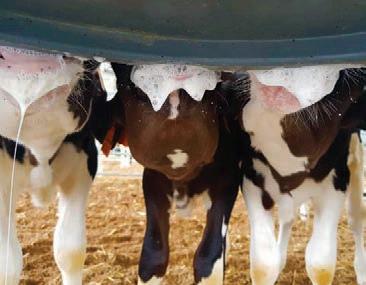
To get to that stage, the Kings asked renowned Massey University
epidemiologist Professor Roger Morris for some help. Miles turned his records over to Morris, who was surprised by what he saw.
“Miles had the best set of animal records that I’ve ever come across, dating back right to the formation of the flock.


“So I helped him get that together and brought in Professor Nicolas Lopez-Villalobos in as the geneticist and went through the process of getting the breed recognised. I also help on the issues of maintaining its high health status and so forth, which is critical to exports.”
Morris also connected the Kings with Monterra dairy, which now milks 9000 Dairymeade sheep at its facility in Inner Mongolia.
“Monterra wants to act as the marketing company for genetics in China,” Morris says.




“So they would then onsell the embryos, in particular, to a range of other dairy-sheep producers in China.”
Morris says sheep milk is very popular in China.
“Sheep milk is very good for young children, babies and


toddlers. So a range of different products are being produced for different ages of children.

“We’ve got potential arrangements being set up with a nearby AI centre in Woodville to produce the embryos and export them.

“It seems to me a perfect opportunity for someone in New Zealand to pick up.”
So what does the perfect NZ milking ewe look like?
“It’s still largely the East Friesian, but with 25 years of development we’ve made a more stable animal for New Zealand conditions,” Miles says.
“The temperament has had a big, big influence on the letdown. So the sheep settle down quickly, whereas originally we had to do quite a lot of manipulation to get them to release that milk.
“They had to have hardiness, there were some very thinskinned sheep that did not survive very well. They didn’t have that stamina to put up with NZ’s conditions.”
With the covid-19 downturn behind them and the genetics business maturing, the Kings reckon it is time to move on. Their children and grandchildren live in Australia and the hope is to join them there soon.
“We’ve got three daughters, all living overseas with families. And when you’re as committed to a business as we have been, we’ve got teenage grandsons we’ve seen five times in their life,” Janet says.
“So at some point, you realise that you have to back off and wind down. But there’s a lot of potential in the business.
“It’s been an amazing experience.”
Miles had the best set of animal records that I’ve ever come across, dating back right to the formation of the flock.
Professor Roger Morris Massey University
A Lincoln University PhD student and AgResearch staffer has found another meaning for the phrase “grub’s up”. Richard Rennie reports
CAITLIN Hyde says her interest in New Zealanders’ attitudes to eating insects was piqued after learning more about the small boom in the “insects for food” niche that surged in the country in the mid-2010s.

“We saw products come to the market like cricket flour that gained some attention but did not really last long. Many of the products you cannot buy anymore. It interested me how a sector that showed so much promise did not last very well.”
A recent report produced by FoodHQ identified four types of emerging proteins NZ could be a leader in producing, none which were insects, but back then the surge accompanied globally increased interest in alt-proteins that included everything from lab-grown meat to fungi and insects.
Hyde says options for alternative proteins are driven as much by the unique interactions we all have with food on a physical and psychological level, as by
the practicalities of growing and processing the product. She says the pointy headed aspect of her work included trying to understand how edibility is defined and the multiple physical and human elements that can determine that.
to work done by Wageningen University that specialises in agricultural and food research.
But she notes in Western cultures the concept of eating insects cuts across many peoples’ best efforts to keep them out of their kitchens, making them even more of an anathema to becoming part of one’s diet.
This is despite finding that a significant majority (two-thirds) of consumers claim they would try eating insects.
“But the problem is twofold there. When surveyed people will make such claims, even if they don’t actually do it, and secondly there is a difference between trying and actually building them into your dietary regime.”
She cites Dutch insect company Insecta as an example of an operator that achieved an alignment of marketing, breeding, retailing and legal requirements to successfully market meal worms in a country where insect-eating has gained momentum in recent years.
This has also been attributed
NZ has a reasonably strong market for insects as a novelty food item, such as candied crickets for example, where taste is not necessarily the key focus.

A self-confessed arachnophobe, Hyde says she has experimented with a variety of insects in her own cooking.
These include locusts, which produced a disconcerting “pop” when bitten down on, meal worms that crisped nicely when baked in a slice with cranberries and chocolate, and huhu grubs, which she was not a fan of.
In understanding peoples’ definition of “edible”, Hyde’s work has highlighted how that means different things to different people.
“Insects may well be a good source of protein. But people also want something that tastes good, is easy to cook and socially fits well with them, and we need to try and capture all that when we are considering insects, which is hard to do right now.”
With 2 billion people in the world regularly dining out on any of 2000 edible insect types, it is tempting to consider a market
must exist within, and beyond, NZ’s palates.
“The problem is NZ is already a very small market, and insects as food are another smaller niche within that. If we were to do it at any scale, we would have to look at exporting, and that is another whole problem area around the regulations for exporting insects.”
NZ does have the benefit of being a pure source for base breeding stock, with a proven record of good phytosanitary standards. Hyde says there could also prove to be opportunities there to add additional value.
AgResearch and Lincoln University work is looking at the impact that feeding rongoā rākau or Māori medicinal herbs to native
insects could have when consumed by humans.
Meantime, the industry is stuck in a chicken-and-egg situation, where volumes remain small. There is only one major supplier, based in Otago, meaning often supply is to top-end food outlets capable of getting a premium on them.
Medium term, Hyde has concluded that the market for insects as food is likely to remain a niche one, even as the food cost crisis prompts people to reconsider their conventional protein sources.
“But the good thing is they don’t need a lot of land to be produced upon, and could possibly offer an additional stream of income to an existing food-producing business.”
Insects may well be a good source of protein. But people also want something that tastes good, is easy to cook and socially fits well with them.Caitlin Hyde Lincoln University-AgResearch
FARMERS WEEKLY – farmersweekly.co.nz – August 28, 2023


Deadline Sale
This is a well-presented dairy unit, the main dairy farm is 98ha in 6 titles with a 13ha support block on its own title giving a total of 112 hectares in 7 titles. The contour is all flat and it is well fenced into 51 main paddocks accessed off a central race system. Milking around 200 cows, with a 4-year production average of 101,000 kgMS. Milking through an older but very functional 15 ASHB shed with a meal feeding system and 16T silo with a good array of support buildings and a 4 bedroom Huntly brick dwelling. The 13.49ha support block is located 785m south on Falls Road.
Runoff
This appealing north facing block is currently used as a support block for the dairy farm. Growing maize and silage, grazing young stock along with wintering some cows. The property is well fenced and raced with a bore supplying good water to all paddocks. A small shed is great for hay or implement storage.


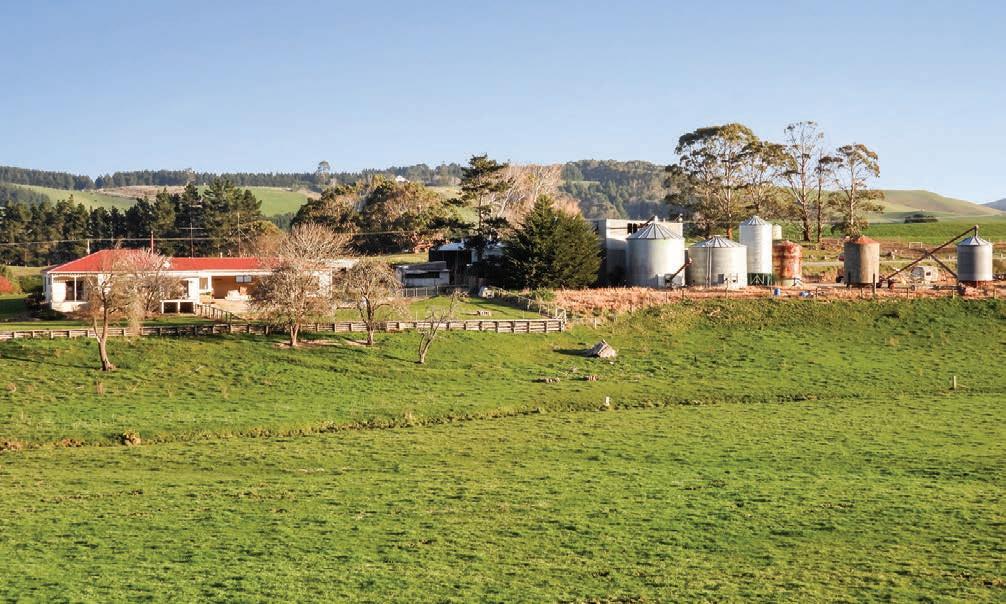
Tender closes 3.00pm, Thu 14th Sep, 2023, Property Brokers, Morrinsville Web pb.co.nz/MOR165942
Peter Lissington M 027 430 8770
Tender closes 3.00pm, Thu 14th Sep, 2023, Property Brokers, Morrinsville Web pb.co.nz/MOR165942
Peter Lissington
M 027 430 8770
Explore your options
This property is situated on Island Block Road with a long road frontage and is flat to rolling contour. Currently a support block which is leased to the neighbouring dairy farmer. Approx 25 effective hectares. There are many options - build your dream home or landbank whilst continuing with the current lease agreement.

Tender closes 3.00pm, Thu 14th Sep, 2023, Property Brokers, Morrinsville Web pb.co.nz/MOR165942
5010 Hampden-Palmerston Road – 127 ha majority flat block with strong soils. Renovated 4 bedroom home. 4 bay and 3 bay sheds, 4 bay lean-to and 4 x 150 tonne silos. Strong cereal cropping history.
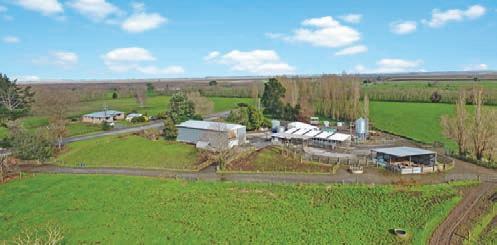

Fleming Road – 142.5 ha well balanced block divided by Fleming Road with 50% flat and remainder easy rolling contour, strong soils and good fencing. 4 bay implement shed and a 3 bay haybarn.
Deadline Sale closes Friday 15th September, 2023 at 4.00pm (unless sold prior)
View By appointment Web pb.co.nz/OMR167114 pb.co.nz/OMR167111 pb.co.nz/OMR167118
Peter Lissington
M 027 430 8770
Chisholm Road – Approximately 100 ha block with woolshed and sheep and cattle yards (subject to survey) with flat contour and strong soils. These properties have multiple purchasing options with numerous titles.
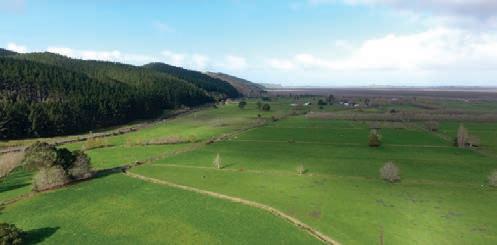
Merv Dalziel M 027 439 5823
This dairy farm is a great unit and will give buyers many options. This farm would be a perfect first dairy farm or would suit a couple looking for an easy-to-run operation close to town. This great opportunity is located on the tarseal very close to Kaitaia.
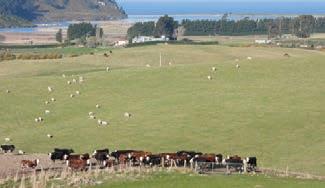


109.29ha approx. of flat to rolling land with a very little amount of medium hill. The fencing is in good order and this property has great infrastructure. There is good shedding and the 34 ASHB milking shed makes milking the cows a piece of cake. There is a unit providing accommodation for a worker. A comfortable 3-bedroom, 1-bathroom farmhouse with a big entertainers deck completes this package.
This lovely unit has been well farmed and is set up well. Good races and fencing make moving the cows an easy job. The farm is fenced into about 60 paddocks. With two waterways running through the property giving you an all year round water supply for the stock. Currently the water is pumped out of one of the waterways and reticulated to all paddocks.
This farm would give buyers other options such as cropping, horticulture, intensive beef farming or calf rearing. With fert being added and re-grassing having been a part of the operation, this farm grows good feed. Milking about 270 cows on a split calving system, the average production for the last 3 years is 106,666kg MS.
Viewings are by appointment only.
FOR SALE BY TENDER (unless sold prior) – Price is plus GST (if any)
Tenders close 7th September 2023 at 1pm
Joel Vieviorka | 020 403 60603 joel.v@hazerealestate.co.nz

https://www.hazerealestate.co.nz/




Expressions of interest are invited for the position of Huntsman with the Dannevirke Hunt. The Hunt owns an attractive farmlet on the Dannevirke town boundary with a four bedroom family home, large kennels, stables and large truck/implement shed. The applicant needs to be a competent rider who is passionate and loves to hunt and who is keen to develop a career with hounds hunting the diverse Central & Southern Hawke‘s Bay farmland.
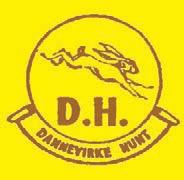
For full details please email ohukia@xtra.co.nz or call Joint Masters –
Oliver Edgecombe 027 276 1275

Maurice Beatson 027 450 9426

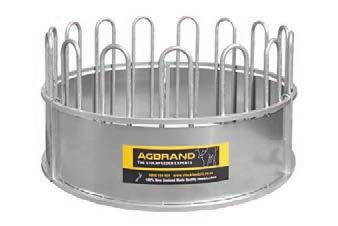
Applications close 10th September 2023
ben@waterhousecc.co.nz
027 559 7168



At Beef + Lamb New Zealand (B+LNZ) we are passionate about the sheep and beef industry and committed to growing a sustainable and profitable future for our sector. We are farmer owned and funded and work on their behalf.
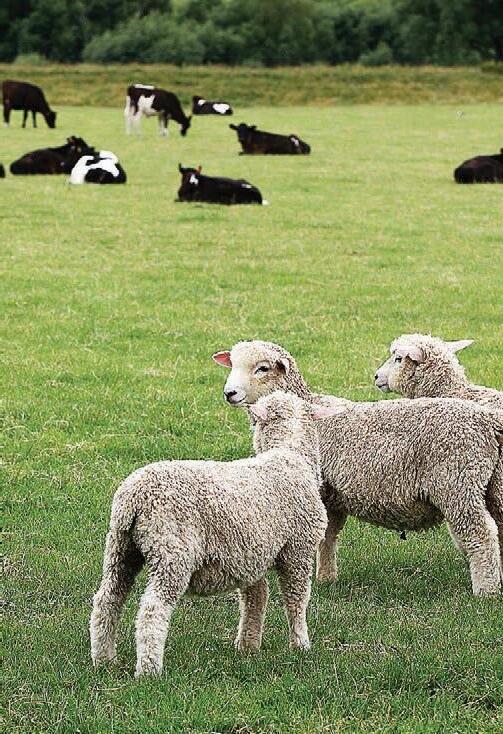
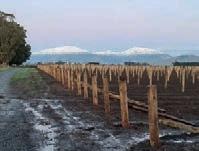


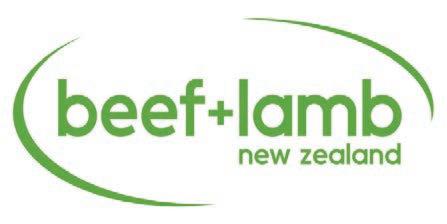
Our vision for the sheep, beef and dairy industry is Sustainable and profitable farmers, thriving rural communities, valued by New Zealanders. Our priorities are focused around three key areas: Supporting farming excellence; Championing the sector and Increasing market returns. B+LNZ has an Associate Director position available commencing November 2023. The purpose of this Associate Director position is a developmental opportunity to provide governance experience and mentoring to aspiring farming leaders in the sector. It specifically aims to extend the knowledge and understanding of governance, its environment, the role of the B+LNZ Board, the legal framework and Directors responsibilities, and offers a unique opportunity to experience strategy and governance in action from within a sector organisation.
All prospective Associate Directors must have a direct connection to a levy paying farm, and be strongly committed to furthering our farming sector, have the highest levels of integrity, be collaborative in nature, possess sound judgment, and be innovative and strategic in their thinking. The qualities we are looking for are:
• Passion and commitment to the sheep and beef sector


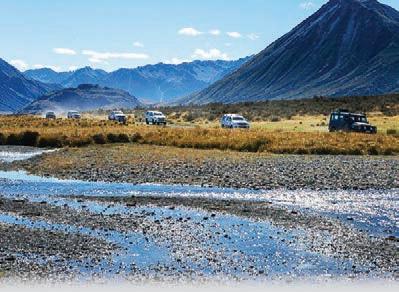

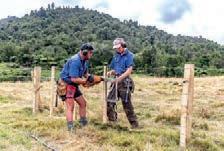
• Highest of ethical standards and behaviours

• Independence in thinking; be prepared to challenge, and be challenged
• Innovative and values continuous improvement and responsiveness to the sectors challenges and opportunities


• Effective, persuasive and respectful communicator
• Empathy with farmers and their rural communities

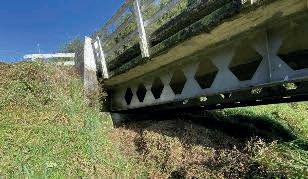
• A role model for the values of the organisation.
The commitment required will be on average one to two days per month with the majority of the 6-weekly meetings held in Wellington. This is an unpaid position however all expenses related to fulfilling this position will be covered.
To request further information on this Associate Director opportunity please email the hrhub@beeflambnz.com
Please apply via the B+LNZ job site https://beeflambnz.com/about-blnz/work-for-us
Applications close Sunday 10 September 2023.

CONTRACTORS
Phone Dave 06 375 8032.


DOGS FOR SALE
BEARDIE HUNTAWAY
BITCH. 1½ years old. Working well. $4000 Phone 027 236 5409.
HUNTAWAY AND HEADING dogs for sale. Huntaway bitch, 4yrs old, $2000. Heading dog bitch, 5yrs old $1200. Phone 027 583 6063.
HEADING PUPS. Strong eye.
Father tricolour, Bitch straight Black/white. Three dogs, one bitch. $350.00 each, good working parents. Phone 027 476 2579
HORTICULTURE
stock health food. As seen on Country Calendar. Orders to: 03 322 6115 or info@nzkelp.co.nz
HYPNOTHERAPY


FARMING FAMILIES, online hypnotherapy support for everyday challenges. Contact Shirley Henderson at shirl@ shirl.nz for a chat. For more info: http://www.facebook. com/handsforhealthnz

LEASE LAND WANTED

DAIRY OR GRAZING FARM wanted. Open to leasing, equity, share farming or developing land in partnership. Rangitīkei, Manawatū or HB areas. Phone Michael 027 223 6156.
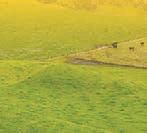


SHEEP AND BEEF breeding farm. Approx 600-1000ha plus. Gisborne, Wairoa, Hawke’s Bay, Dannevirke, Pahiatua and Taupō areas. Experienced Lessee. Contact Pete Hammond. Phone 027 4121466. trekh.b@xtra.co.nz

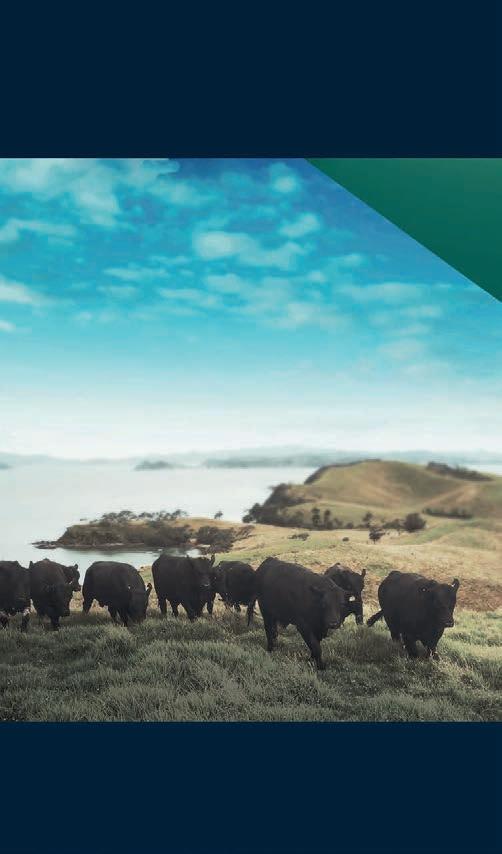

LIVESTOCK FOR SALE
THE GULLIES WILTSHIRE & Low Input Rams. SIL; FE and worm tolerance. Richard Morrison Phone 021 626 513. richard@thegullies.nz www.thegullies.nz


PERSONAL



FRIENDSHIP AND LOVE.
Angela is an intelligent, beautiful lady who prefers the country lifestyle . She enjoys tramping, cooking, fishing, bbqs and weekends away. Angela is looking for a genuine, loyal, easy going country man. For extra details please call 0800 446 332. Quote code 57. Genuine callers only.
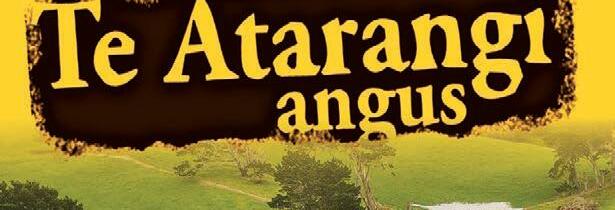
PUMPS
HIGH PRESSURE WATER
PUMPS, suitable on high headlifts. Low energy usage for single/3-phase motors, waterwheel and turbine drives. Low maintenance costs and easy to service. Enquiries phone 04 526 4415, email sales@hydra-cell.co.nz

RAMS FOR SALE
WILTSHIRES-ARVIDSON. Self shearing sheep. No1 for Facial Eczema. David 027 2771 556.

RURAL MASSAGE
RELAXING FULL BODY massage in rural Ohaupo. Unwind. De-stress. Visit ruralmassage.co.nz for details.

WANTED TO BUY


My coworker keeps complaining about his lunch being stolen from the break room fridge, like non stop complaining. Every day he would complain about the same thing, over and over again. Monday morning he brought in a turkey and aged stilton cheese on wheat bread. Put it in the fridge. By lunch time it was gone. Tuesday he brought in ham and cheddar on white bread. Put it in the fridge, again gone by lunch. Wednesday was an egg salad sandwich. In the fridge at 8am, gone by 1pm. Today he brought a chicken caesar wrap, made lovingly by his wife. You guessed it, gone by noon. I hope he brings a salami and Swiss cheese sandwich tomorrow. That’s my favorite.
Here at Farmers Weekly we get some pretty funny contributions to our Sale Talk joke from you avid readers, and we’re keen to hear more!

If you’ve got a joke you want to share with the farming community (it must be something you’d share with your grandmother...) then email us at: saletalk@agrihq.co.nz with Sale Talk in the subject line and we’ll print it and credit it to you.
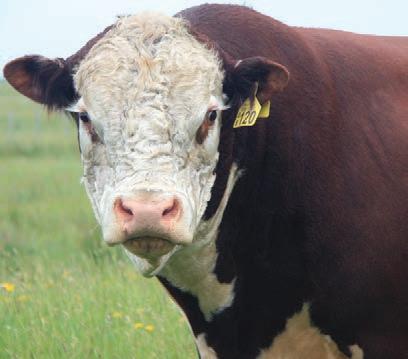
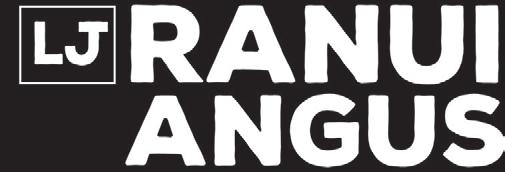
EARLY GESTATION + HEIFERS WHICH ARE SOLD IN LOTS. NON-TRANSFERRABLE






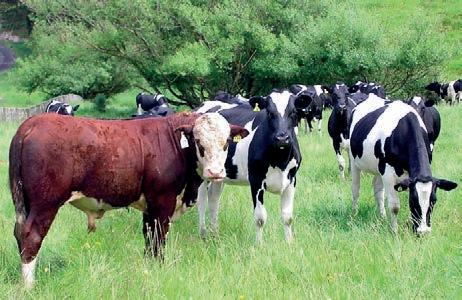


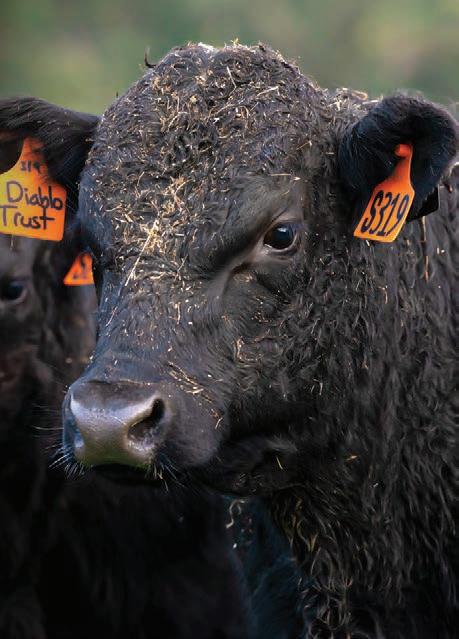


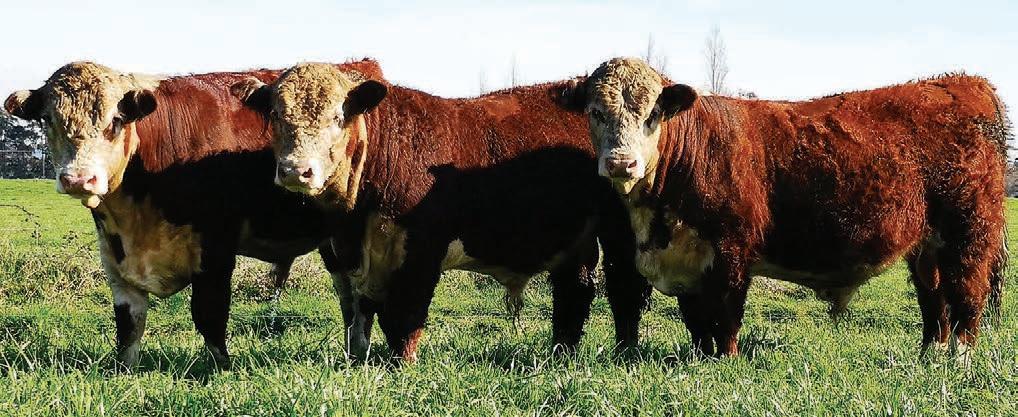
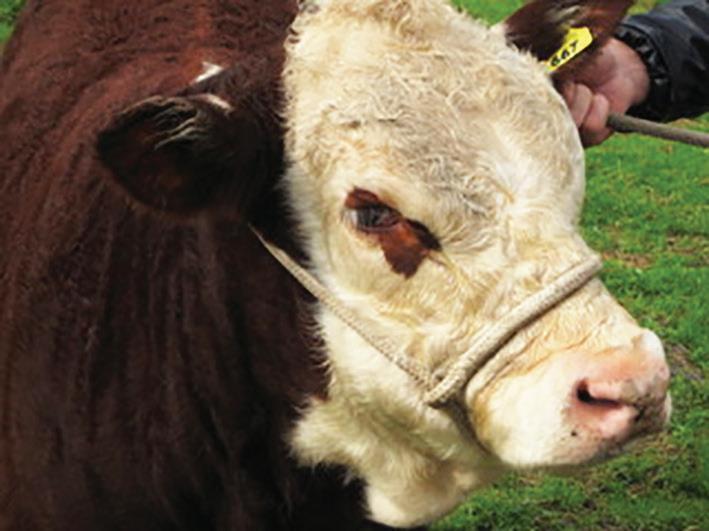
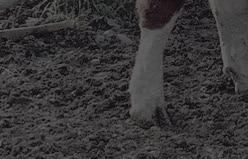

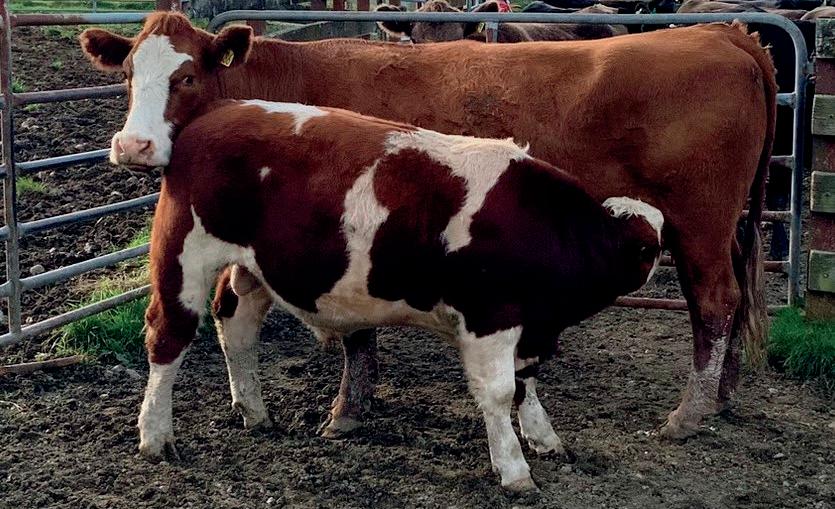

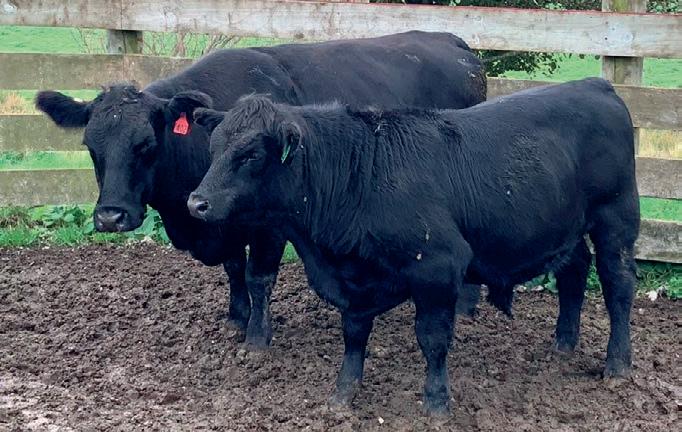
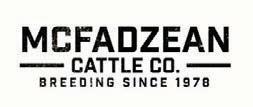



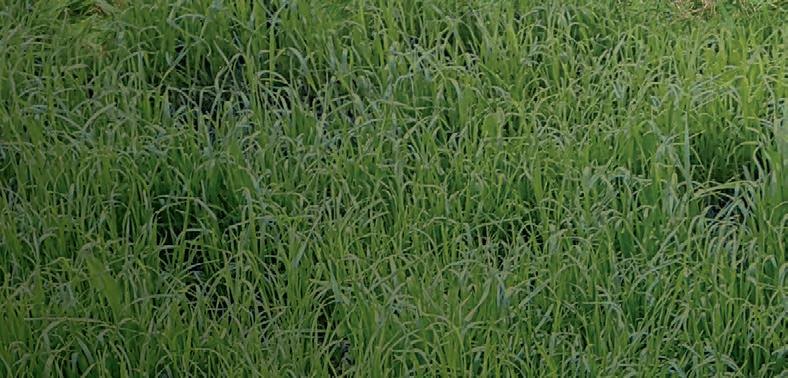
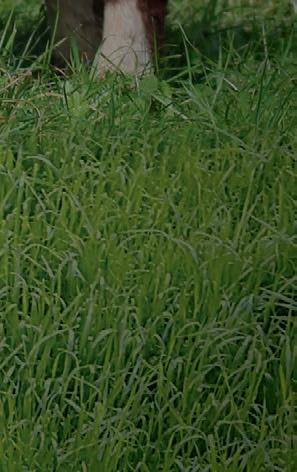
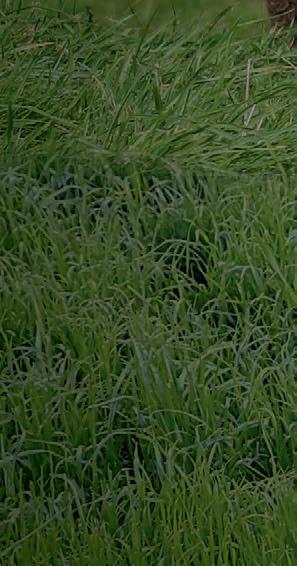
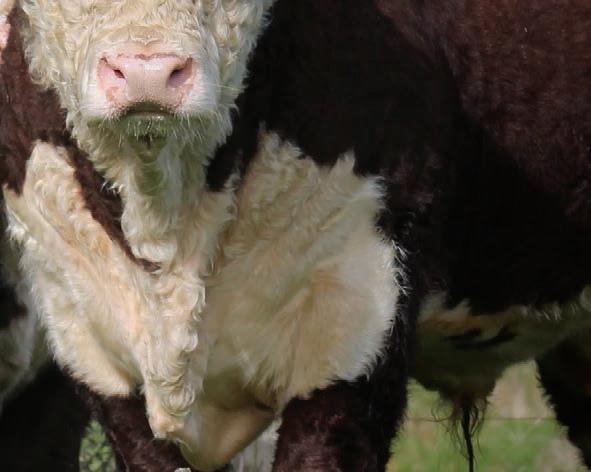





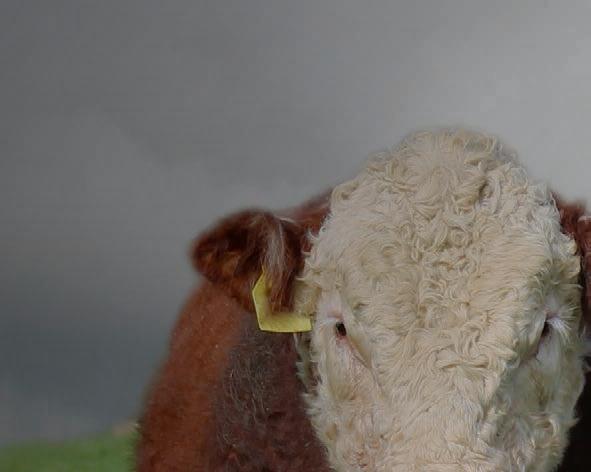
SPRING means new life and we are now on the cusp of the 2023 new season lamb market.
The breeding ewe market was virtually nonexistent this year, as is becoming more common, and it really was a case of blink and you’ll miss it.
But many regions in the North Island are now well into lambing and there is a noted increase in the number of lambs on the ground relative to the number of ewes, leaving some harassedlooking mothers and farmers in the paddocks.
Vet Services Hawke’s Bay has had a busy scanning season, though production animal veterinarian Anyika Scotland noted that volume was down.
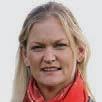

“The biggest issue with scanning this year was access. It was hard to get to farms and much slower
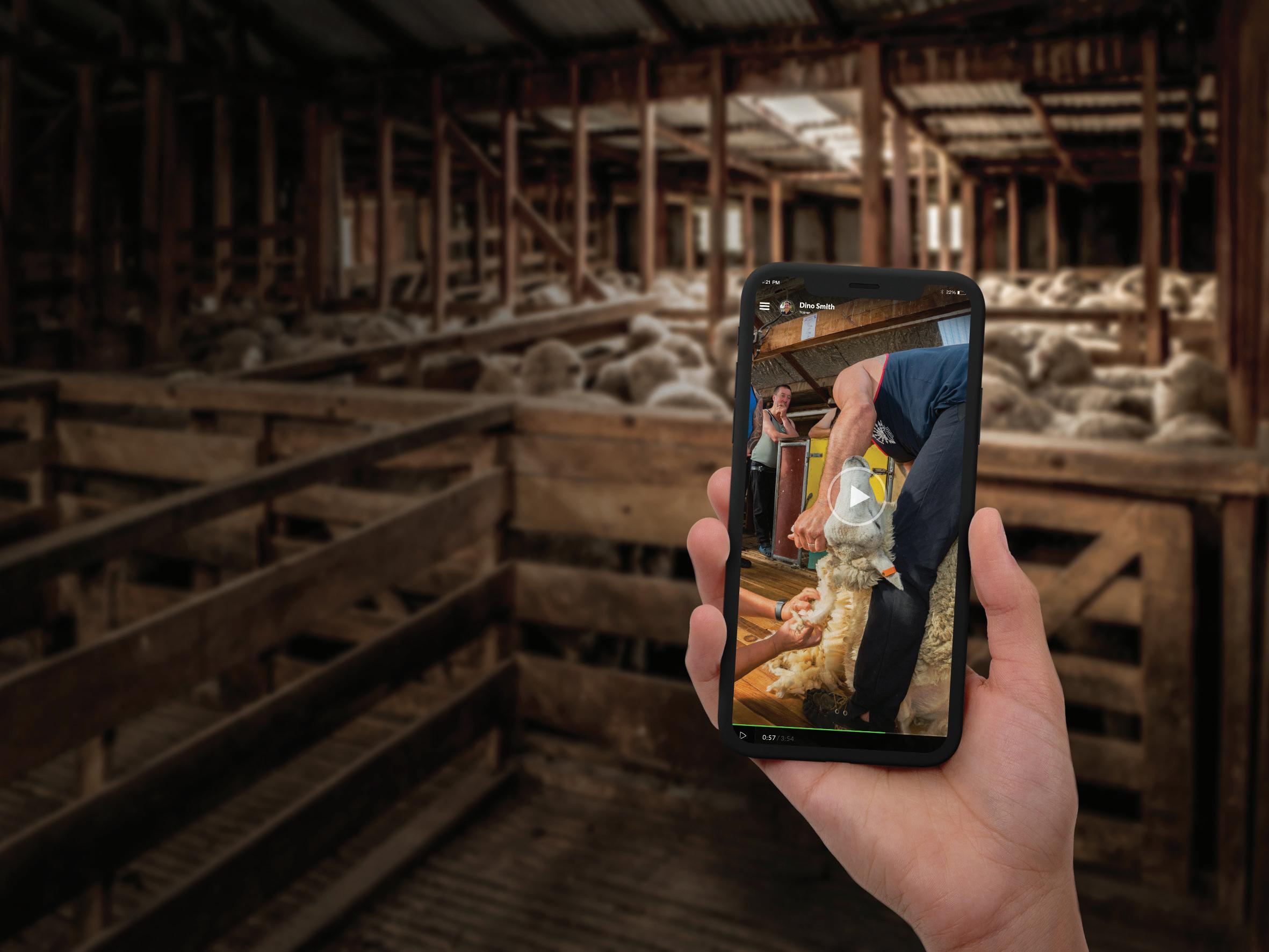
was collected and from 380,000 maternal mixed-age scanned by Vet Services, an average lambing percentage of 173.8% was calculated, which is 5% higher than last year and the highest since 2004.
That was led by increased numbers of multiples mainly with the dry rate average at 3.8% – 1% lower than last year. Two-tooth ewes showed a very similar result in terms of percentage changes –the average scanning percent was up 5% to 163% and dry rates down 1.5% to 4.7%.
Despite a drop in the number of ewes lambed this season, the increase in lambing percentages should lead to a similar volume of lambs coming forward to the processors and trade market.
also noted a lack of single lambing ewes.
“The biggest change from last year has been the lack of singles around with a lot of places sitting at 178%-187% in-lamb, twinsingle identification,” Campbell said.
“The ewes have all flushed well with the high growth rate of pasture throughout summer and not many farmers having to work their ewes after weaning. This has been clear and evident with so many ewes being mated in the early first cycle and not many lates around compared with previous years.”
What is lacking is the number to scan, with Campbell citing land-use change to forestry as one of the major culprits in the area covered, as well as cyclone damage issues. In all, 185,000 ewes were scanned by Alba Livestock and the average dry rate for mixed-age ewes was 2% and 2-tooths, 4%. Mixed-age ewes averaged 181% twin-single ratio.
that the lambs will be smaller on average, given most will be twins
Ewe numbers are losing out to encroaching forestry, but the harassed-looking mothers are making up the difference in more multiples after being mated in the early first cycle.
Lambs
Chatham Islands lambs finally made it to the mainland’s shore, after nearly six months’ delay due to boat repairs and maintenance.
Just over 1300 mainly Romney lambs from four vendors were presented at Temuka last Monday and were welcomed by buyers. Most were heavier lambs, and mixed-sex lines sold for $124-$145 while wether lambs made $122-$155.
Chatham Islands lambs should continue to appear on a regular basis now, alternating between Temuka and Stortford Lodge saleyards.
Romney ewes, SIL 158%-190%, good to very good
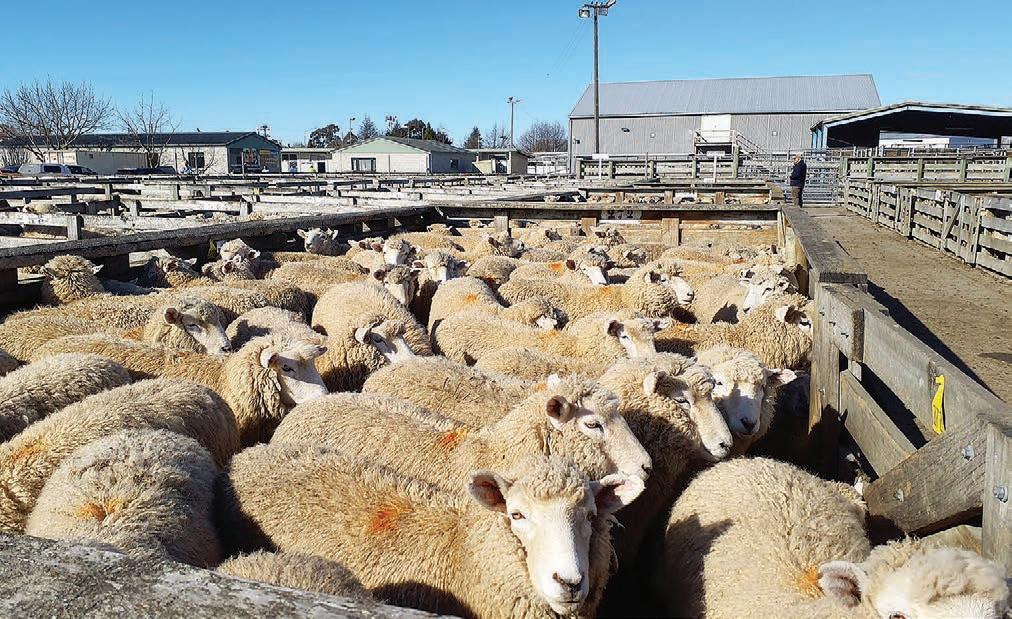

















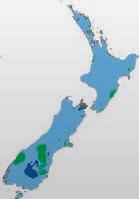




NOTE: Slaughter values are weighted average gross operating prices including premiums but excluding breed premiums for cattle.
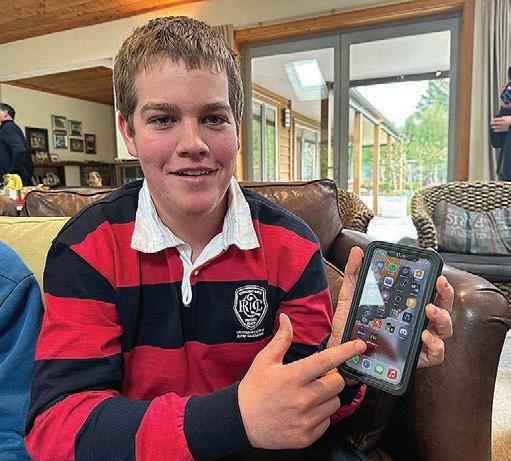
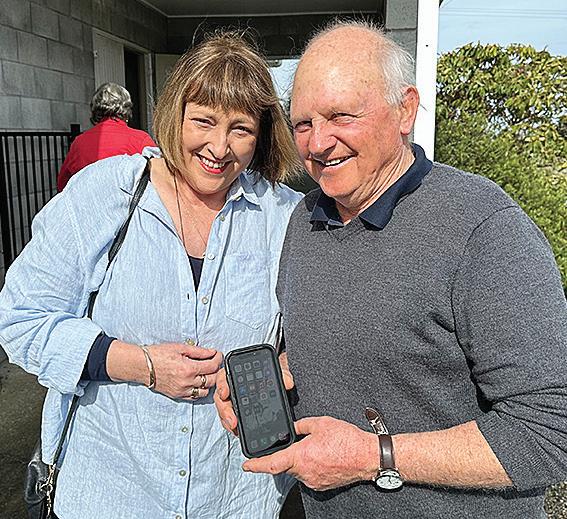
Data provided by
Milk price futures ($/kgMS)
Canterbury feed wheat ($/tonne)
Dairy Futures (US$/t)
Nearest contract Last price* Prior week4 weeks prior
245025552925 SMP 235024102650 AMF 457047704780
450046704650 Milk Price 8.208.208.22
* price as at close of business on Wednesday
WMP futures - vs four weeks ago (US$/tonne)
Canterbury feed barley ($/tonne)
iPhone or iPad

• Open Safari. Other browsers, such as Chrome, won’t work for this.
• Navigate to farmersweekly.co.nz. Tap “Go.”
• Tap the Share button on the bottom of the page. It looks like a square with an arrow pointing out of the top.
• In the list of options that appear, scroll down until you see Add to Home Screen. Tap this. The Add to Home Screen dialog box will appear.
• Choose a name for the website shortcut. You’ll see the link so you can confirm it. Click Add when you’re done.
Android
• Open your web browser eg Chrome.
• Navigate to farmersweekly.co.nz.
• Tap the menu icon (3 dots in the upper right-hand corner) and tap Add to home screen.
• Choose a name for the website shortcut, then your browser will add it to your home screen.
WINTER 2023 ends this week and what a strange winter it has been. It started off so incredibly mild and wet and has ended on a slightly drier and cooler note.
Winter 2023 will very likely end warmer than average due to the exceptional warmth at the beginning. Even towards the end, here in August, there has still been a lack of really heavy frosts. I don’t even think we had any “severe” rated frosts this year – and if we did they were brief and isolated.
Average monthly and seasonal temperatures include both daytime and nighttime temperature – sometimes we can feel cold by day with cloud and cold winds, but the nights may be a few or several degrees milder –and that’s what helps make for a warmer-than-average month. It’s not always about having obviously warm days.
So let’s review where NZ stands as we head into September and spring 2023.
• Soil moisture
Most regions are now at a much more acceptable rate of soil moisture. Yes, still muddy and squishy for some out there, but to be honest for the end of August that’s fairly normal now. Generally speaking the North Island is close to normal but, yes, still leaning slightly wetter than it should be for this time of year. Only slightly, however, which is better than being completely saturated. In the South Island it’s a similar story, although Canterbury and eastern Otago have pockets

of much wetter-than-normal soil conditions following rain a month ago. Marlborough, Hawke’s Bay and the West Coast appear to have the most “normal” soil moisture conditions for late August.
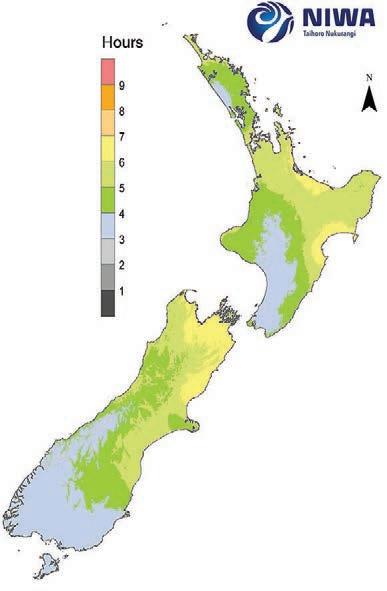
weather means eastern areas in August had some of the driest weather, with the exception of eastern Otago and a couple of isolated parts of Canterbury. Hawke’s Bay, Gisborne and Western Bay of Plenty benefitted most from this drier set-up. The lower southern and southwestern corners of both main islands were the wettest –from Whanganui to Manawatū, Horowhenua to Kāpiti, Wellington and southern Wairarapa and then
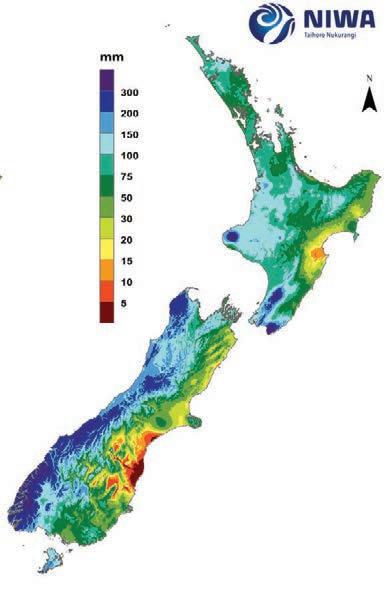

again around Fiordland, Southland and Stewart Island.
• Sunshine
The more western driven set-up means western regions have been gloomier lately.
The gloomiest places in August were the western coastal side of Northland, Whanganui, Taihape, Manawatū, Horowhenua, Kāpiti, Wairarapa, Wellington, South Westland, Southland and Otago. Sunniest and brightest regions were Bay of Plenty, Hawke’s Bay, Kaikōura, Marlborough and Nelson.
• Monday kicks off with a colder southerly flow across all of NZ
• By Tuesday and Wednesday high pressure from the Tasman Sea moves in
• Colder nights again this week with the risk of frost inland
• Rainfall
August’s rainfall was more broken up and scattered, allowing a number of places to return to normal – or even below normal, which many desperately wanted and needed.
The uptick in westerly driven

• High pressure slides off NZ on Thursday allowing for milder nor’westers
• September/Spring kicks off on Friday with rain or showers in the west and a milder airflow